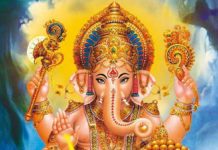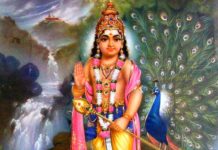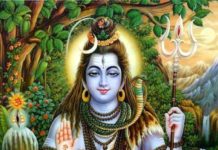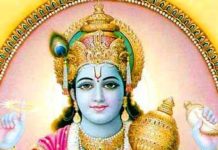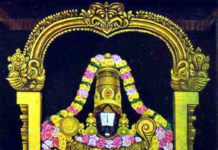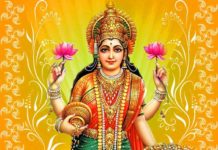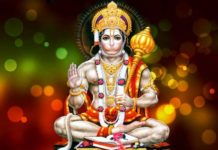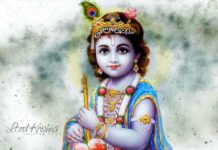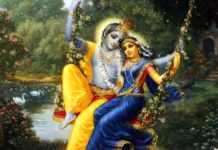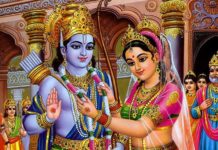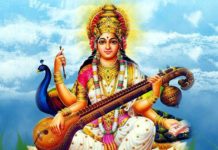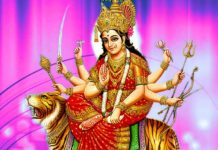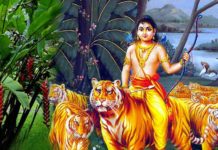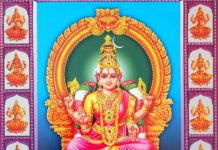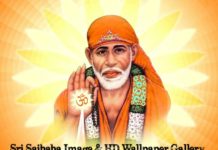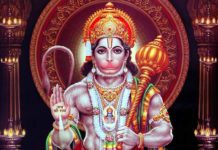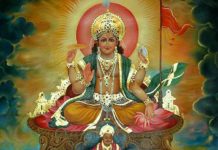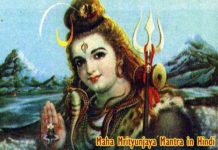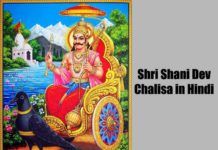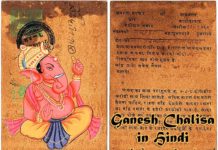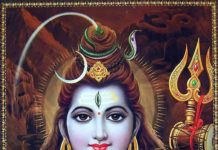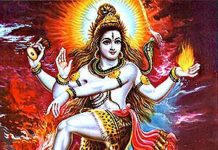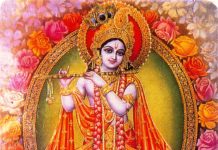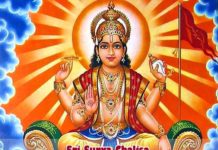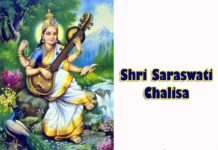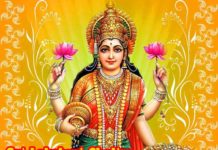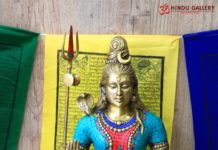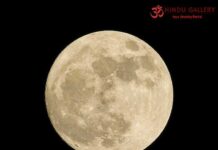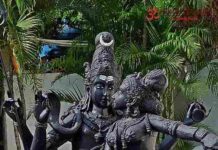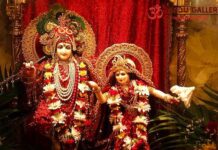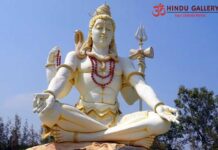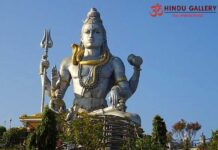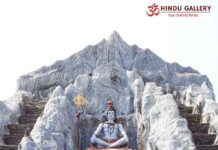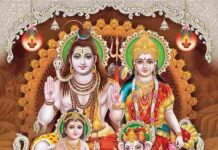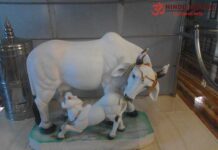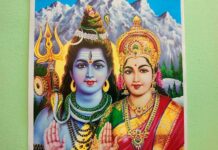
Kurukshetra is the crux of Sri Maha Bharatha, the evergreen epic. It is situated near Pipli town of Haryana. This is one of the most sought-after pilgrimage centres in India. This is the place where the Maha Bharatha War between Pandavas and Kauravas took place.
It is believed that this is the origin when Sri Brahma had created the earth. Kurukshetra is a very old town with innumerable temples. Some of the temples are more than 5000 years old. In this write-up, a few of the temples are covered.
Jyotisar Tirth – Sri Gita Mandir
This is the place of Maha Bharatha war and this is also the place of origin for the scriptures such as Sri Bhavad Gita and Sri Vishnu Sahasranamam. ‘Jyothisar’ means the crux or core of the light.
This place is considered the embodiment of knowledge as Sri Bhavad Gita, the composition alleviating the darkness of confusion and hesitation was created here.
Bhagwan Sri Krishna had given His advice to Arjuna through Sri Bhagavad Gita under a Banyan Tree.
An offshoot of the that holy tree had grown into the 5000-year-old banyan tree.
A marble chariot depicting the conversation between Sri Krishna and Arjuna is kept in a glass enclosure under the tree.
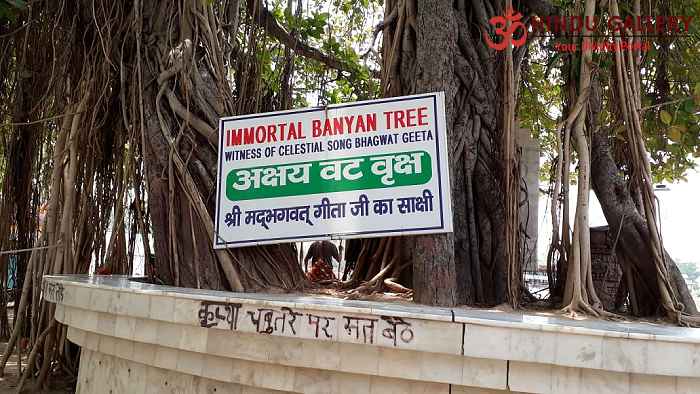
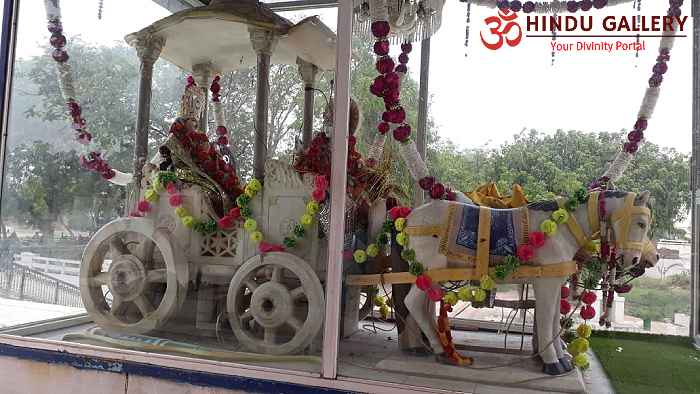
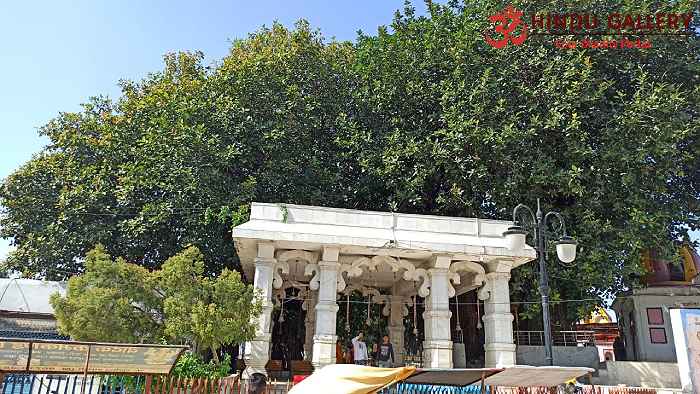
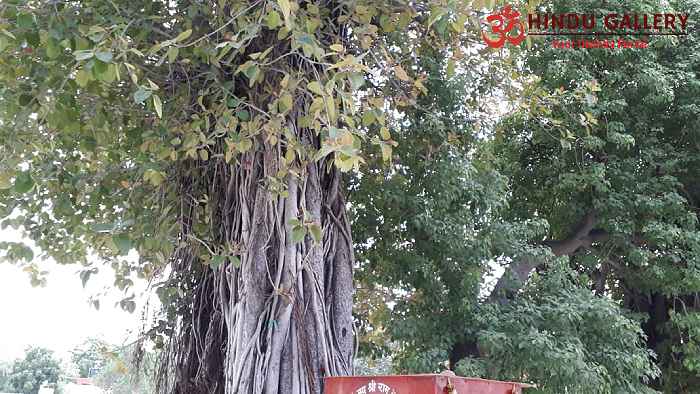
It is to be noted that it is in this very place, Lord Krishna had shown His Vishvaroop to Arjun.
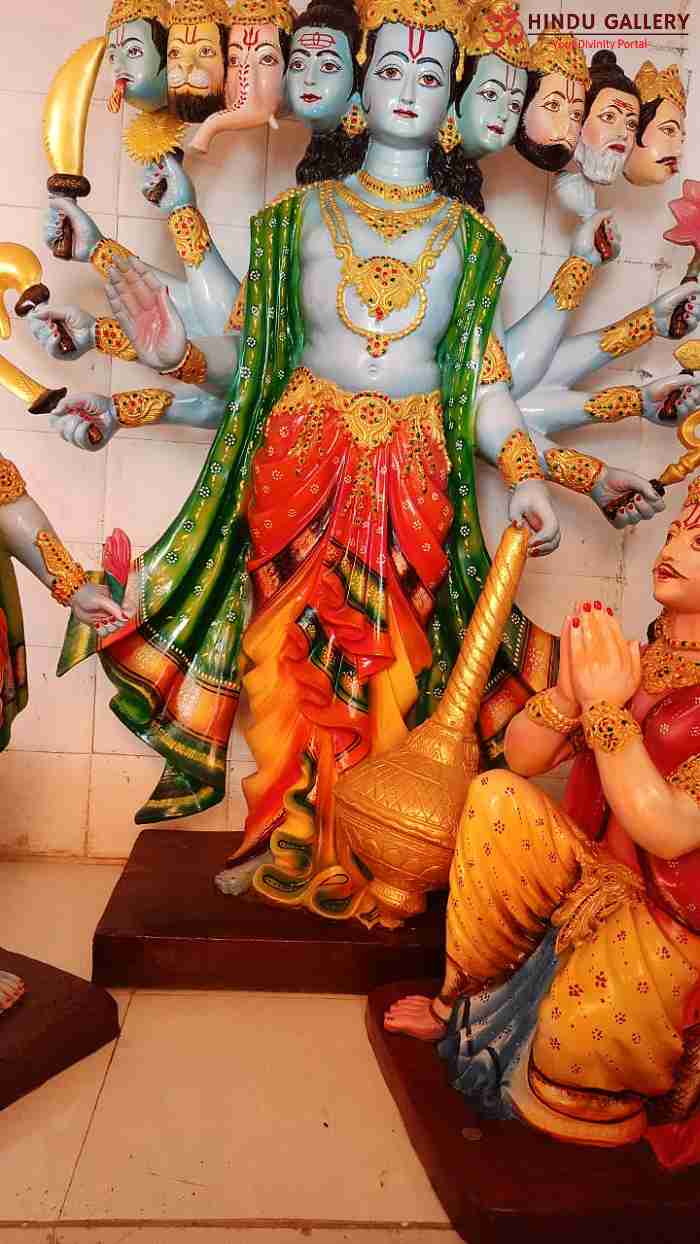
In the campus, there are sanctums for Sri Shiv, Sri Saraswathi, Sri Krishna and for all the Gurus in Maha Bharatha war.
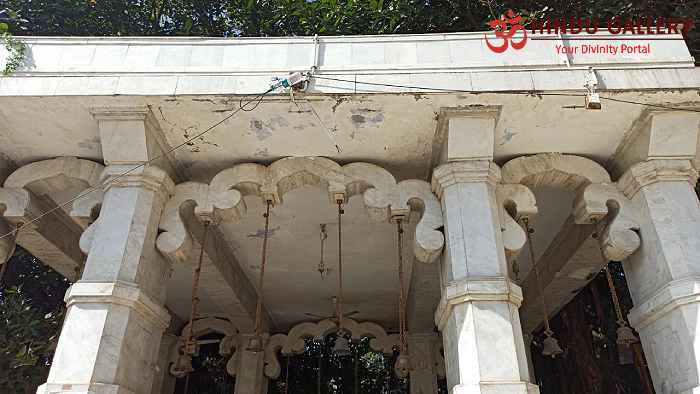
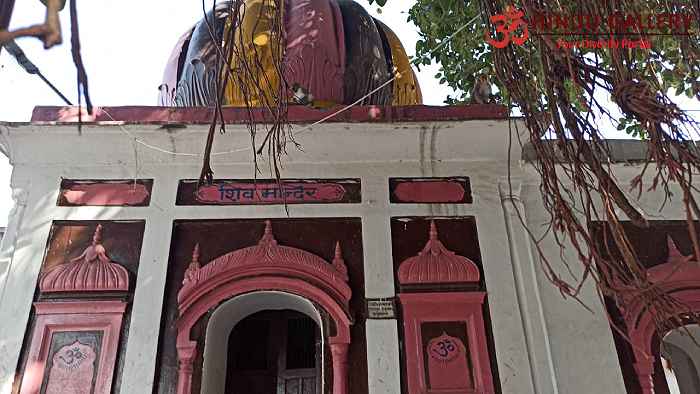
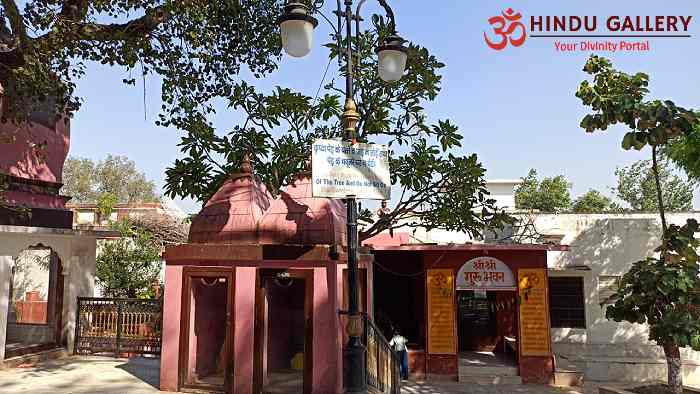
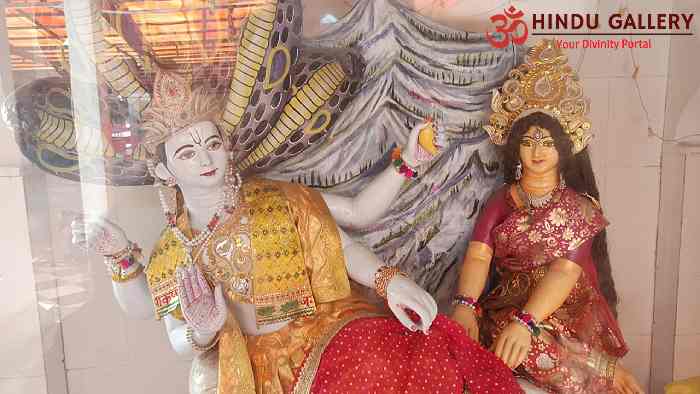
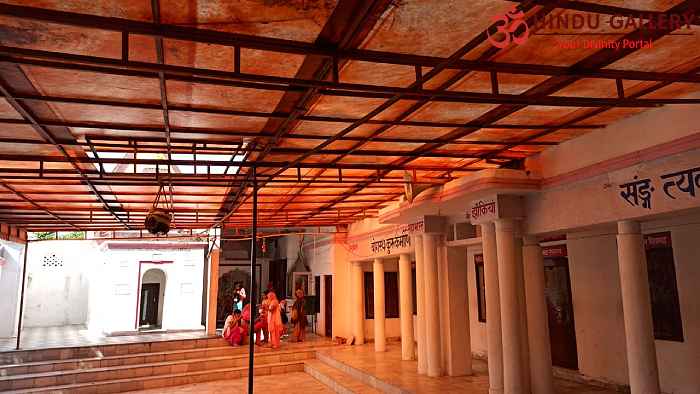
A sarovar (lake) has been constructed.
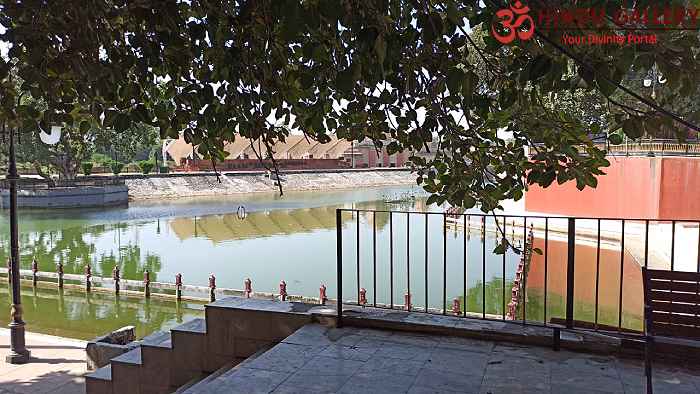
A nice temple to visit for tranquil and peaceful prayer and meditation.
Sri Geetha Kunch Narayan Mandir
This temple is on the Jyotisar road. It appears like a combination of Ashram and temple. The place is quite serene.
The temple is on the upper floor with deities such as Sri Ganesh, Sri Durga Mata, Sri Ram & Sri Sita, Sri Krishna & Sri Radha, Sri Maha Vishnu etc.,
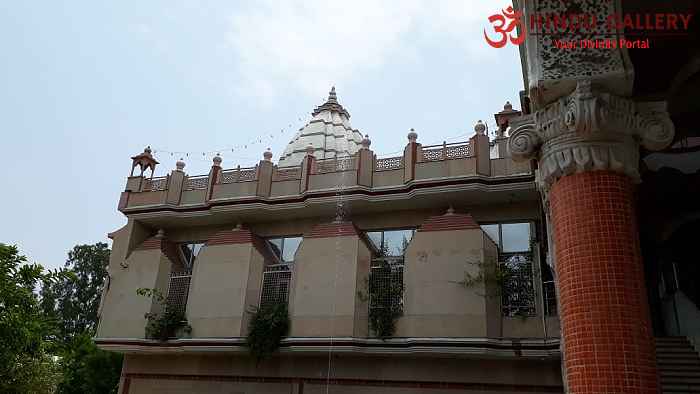
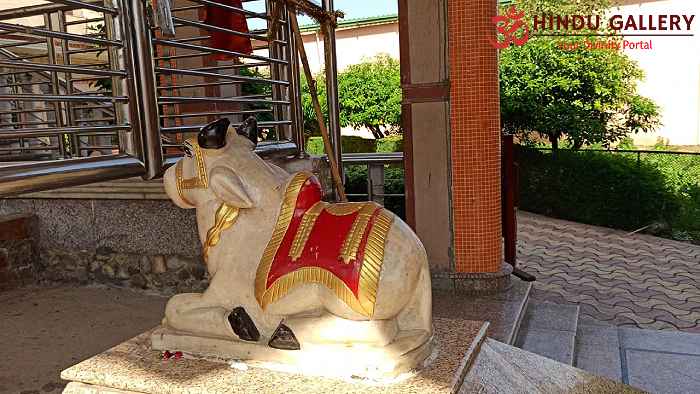
Bhajans are being played there. The statutes depicting Gokulam are kept on the way to the stairs.
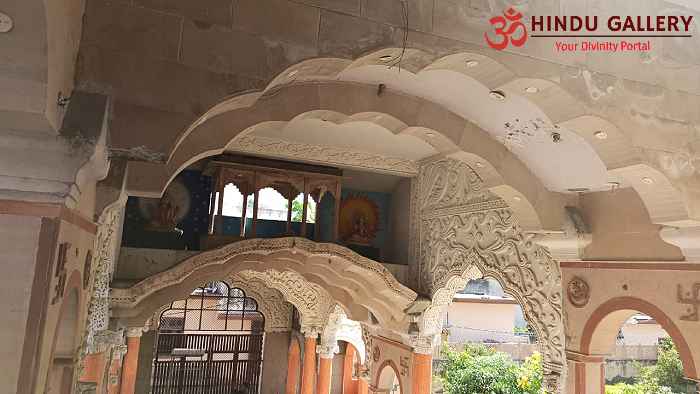
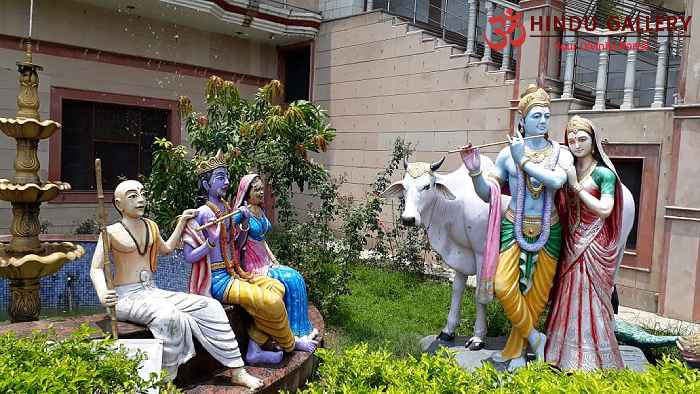
Sweet panakam (jaggery water) is being offered to all the devotees. Especially in the hot sun, it tastes like nectar. The temple has to be visited for the sheer serenity it offers.
Baan Ganga / Bhishma Narkatari Temple
Baan Ganga may be interpreted either as the river born from an arrow or the flow of arrows like a river.
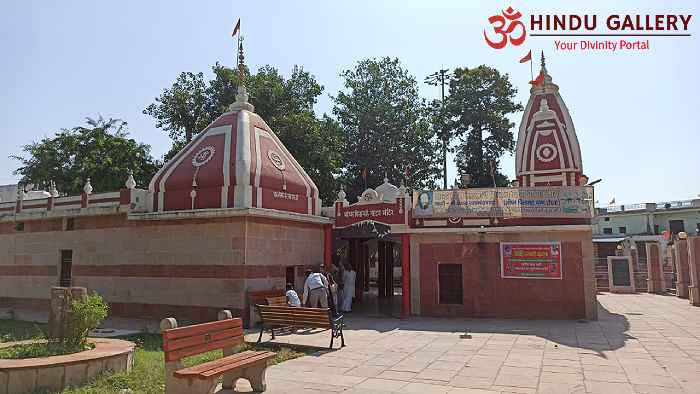
Bhishmachari, the Pithamah of Pandavas and Kauravas, was the son of Sri Maa Ganga and was a scholar and a powerful warrior. Due to the fate and out of familial compulsions, he had to take the side of Kauravas in the Maha Bharatha war.
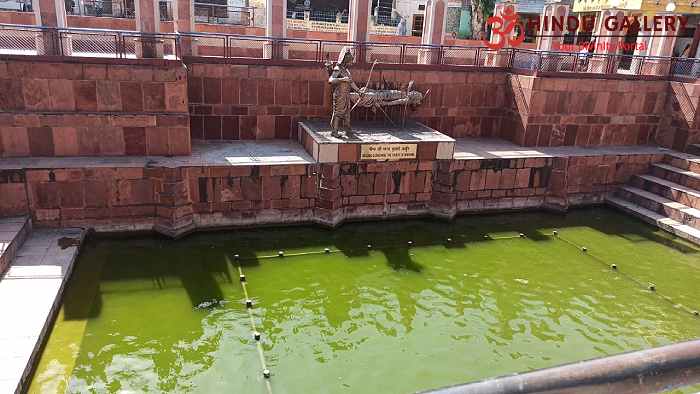
However, his love and affection for Pandavas did not wane and he had also vowed not to kill any of the Pandavas. Bhishma had the boon of Icha mrityu which meant that he could choose to die as he wished.
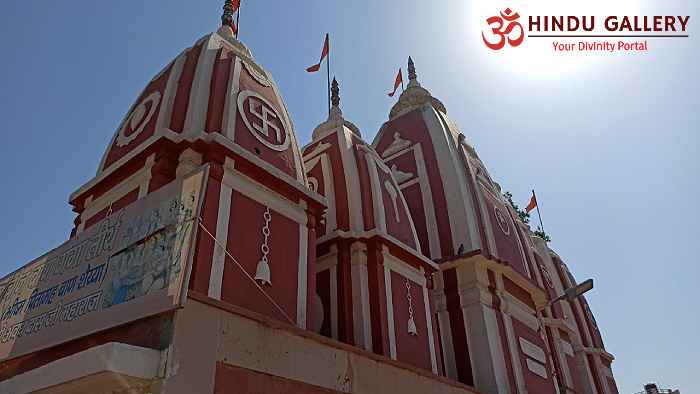
As he wanted to alleviate all his sins of siding with Kauravs, he had asked Arjun, the fiercest of the Pandavas to prepare him a bed of arrows for him (Bhishma) to rest. Accordingly, Arjun did let a torrent of arrows from his bow which fell like flow of water (Ganga).
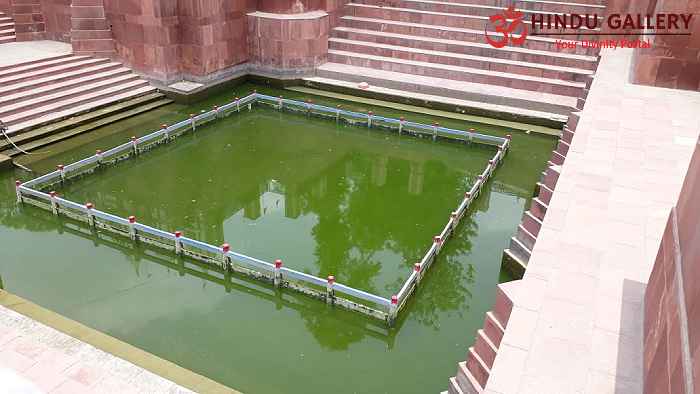
Bhishma had laid down on the bed of arrows. He felt thirsty. He requested Arjun for water. Arjun shot another arrow and mother Ganga had flown from the place and the stream fell into Bhishma’s mouth.
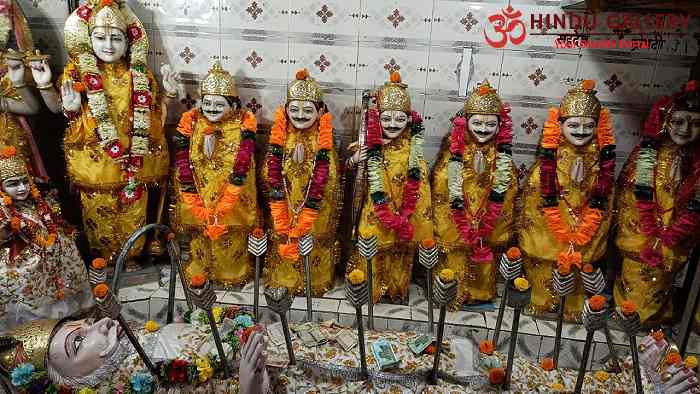
Bhishma had chosen to die when the Sun had moved to the northern hemisphere and before his death, he had asked all his disciples and family members around him and preached about the dharma pertaining to the rulers.
The place where Arjun had made a Baan Ganga is situated in this temple. The water stream created by Arjun for quenching the thirst of Bhishma is also inside the temple premises.
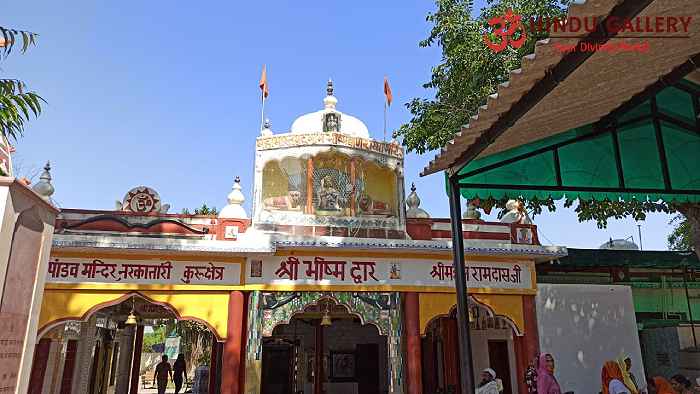
The main sanctum is called as Bhishma Dwar. The idols of Bhishma, Dronacharya and Pandavas are kept here.
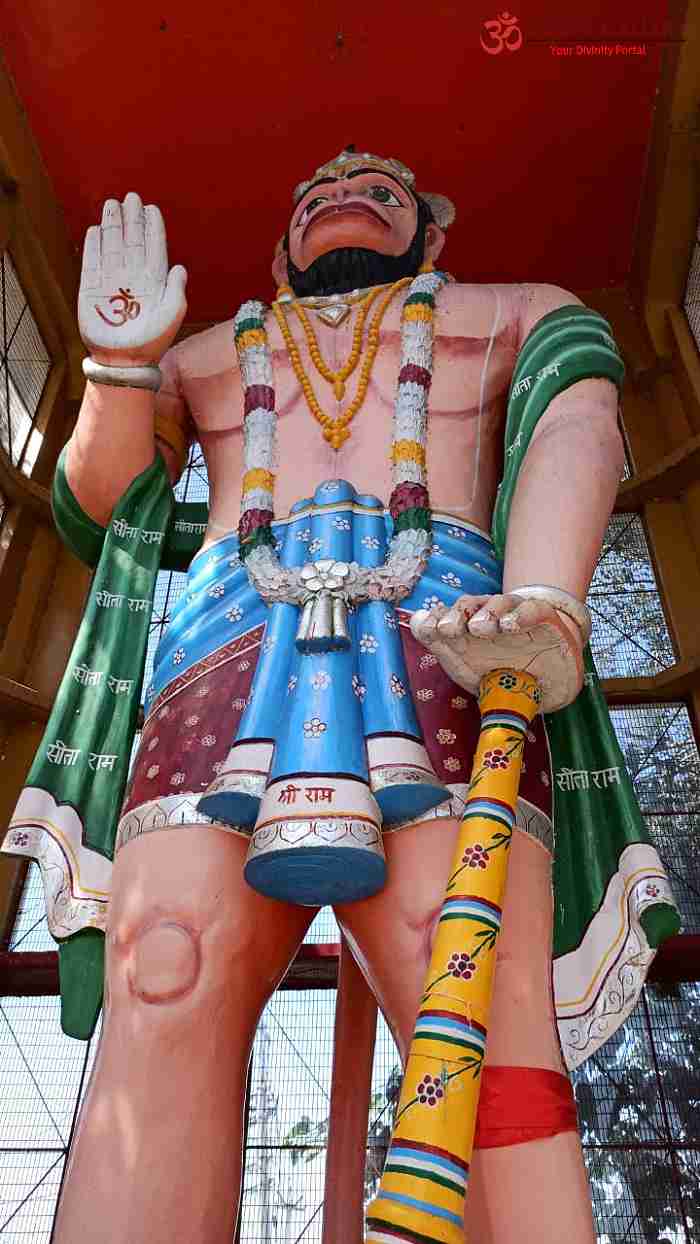
There are dedicated Sannidhis for Sri Anjaneya, Sri Durga and Sri Sudrashana and Sri Narasimha.
Sthaneshwar Mahadev Temple
As it is believed that the place was the origin for creation of earth, it was earlier called as Sthan, i.e, the place. Sri Brahma had installed the Shiv Ling here to denote that Sri Shiv is the God of the place.
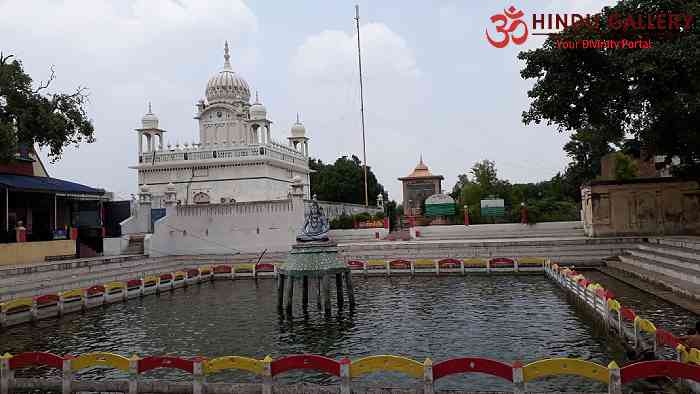
It is believed that Sri Krishna and the Pandavas had visited this temple and worshipped Sri Mahadev prior to Maha Bharatha War.
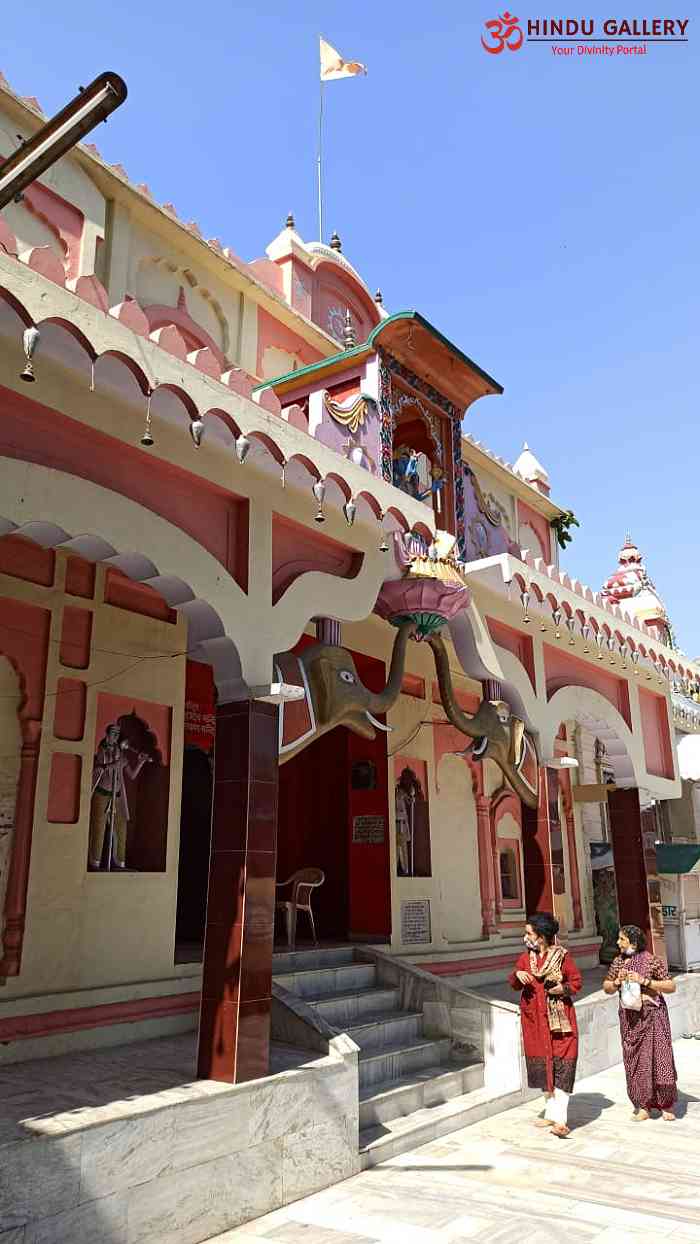
The temple is more than 5000 years old. The tower of the temple is in amla shape with a pinnacle at the top.
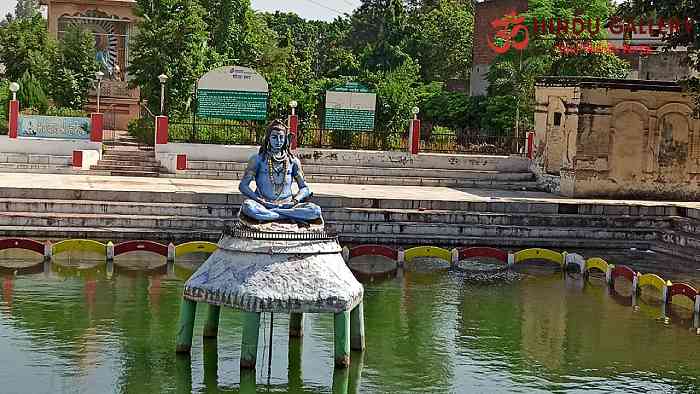
The water in the huge tank inside the temple is believed to cure all deceases.
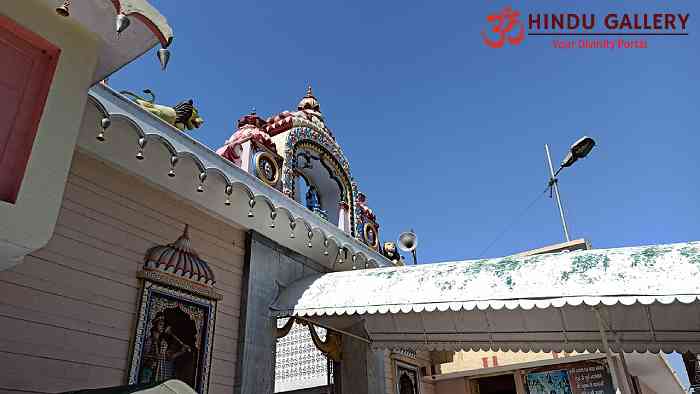
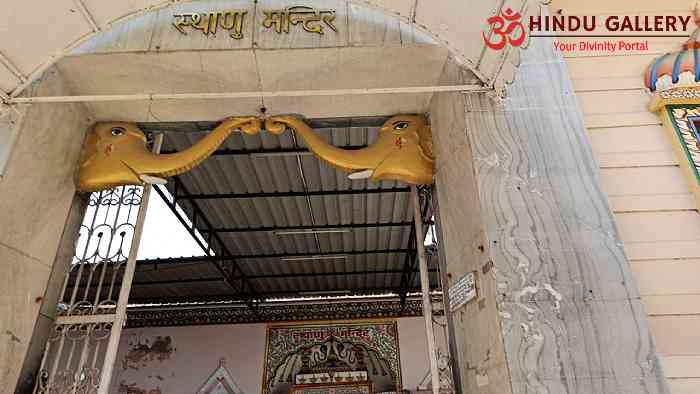
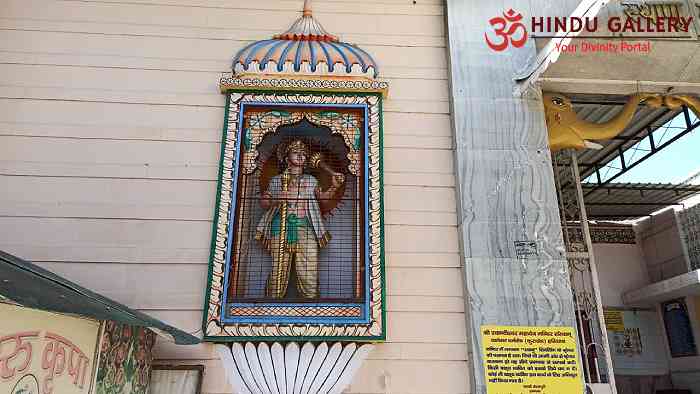
Some visitors take a holy dip here before entering the temple. A King named ‘Ban’ was cured of his leprosy when he took a dip in the holy waters of the pond.
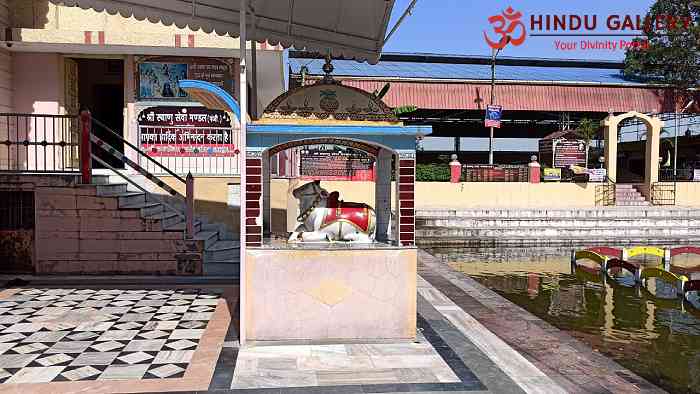
There is also the idol of Sri Shankara Narayana called as Sri Hari Hara.
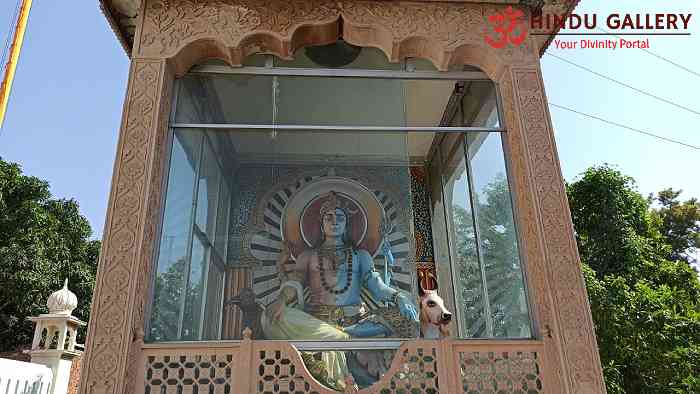
Guru Tegh Bahadur Singh, the 9th Guru of Sikhism had stayed here and hence a Gurudwara also is built near this temple.
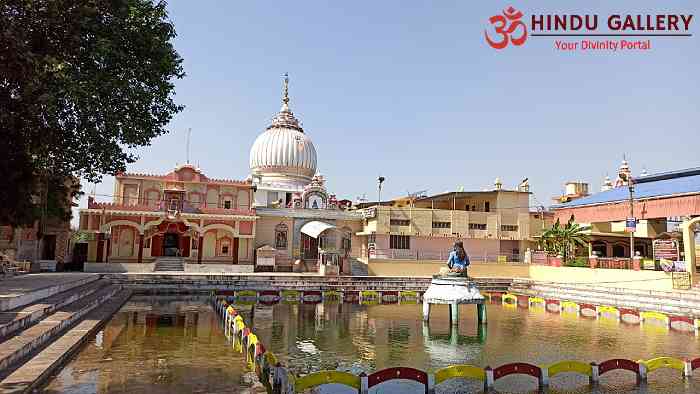
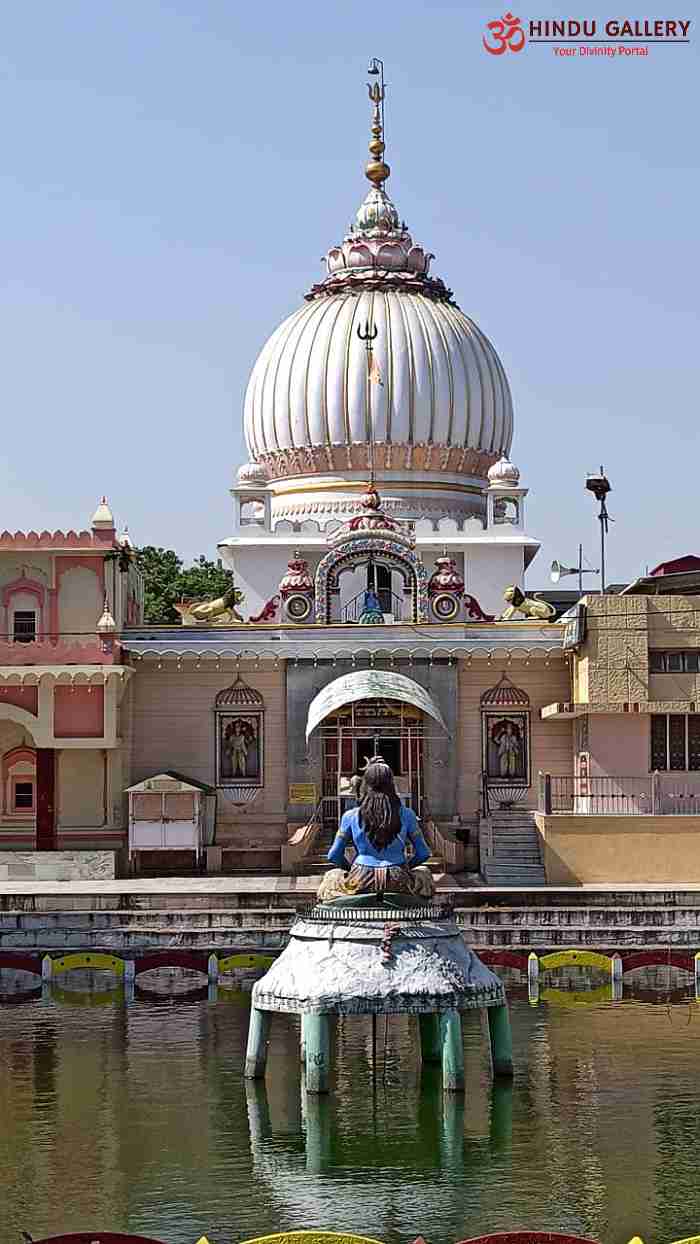
The pilgrimage to Kurukshetra is complete only when this temple is visited.
Navagraha and Bhadrakali Temple
This temple is adjacent to the entrance of Sthaneshwar Mahadev Temple. The temple premises have been built around a banyan tree which is believed to exist even prior to Maha Bharatha era.
The branches and leaves of the tree are left in the open through the top of the main sanctum. Bhagwan Sri Shiv, Goddess Sri Bhadrakali and the Nava Grahas, the nine planets such as Sri Surya, Sri Chandra, Sri Mangal, Sri Budha, Sri Guru, Sri Sukra, Sri Shani, Sri Rahu and Sri Kethu are worshipped here.
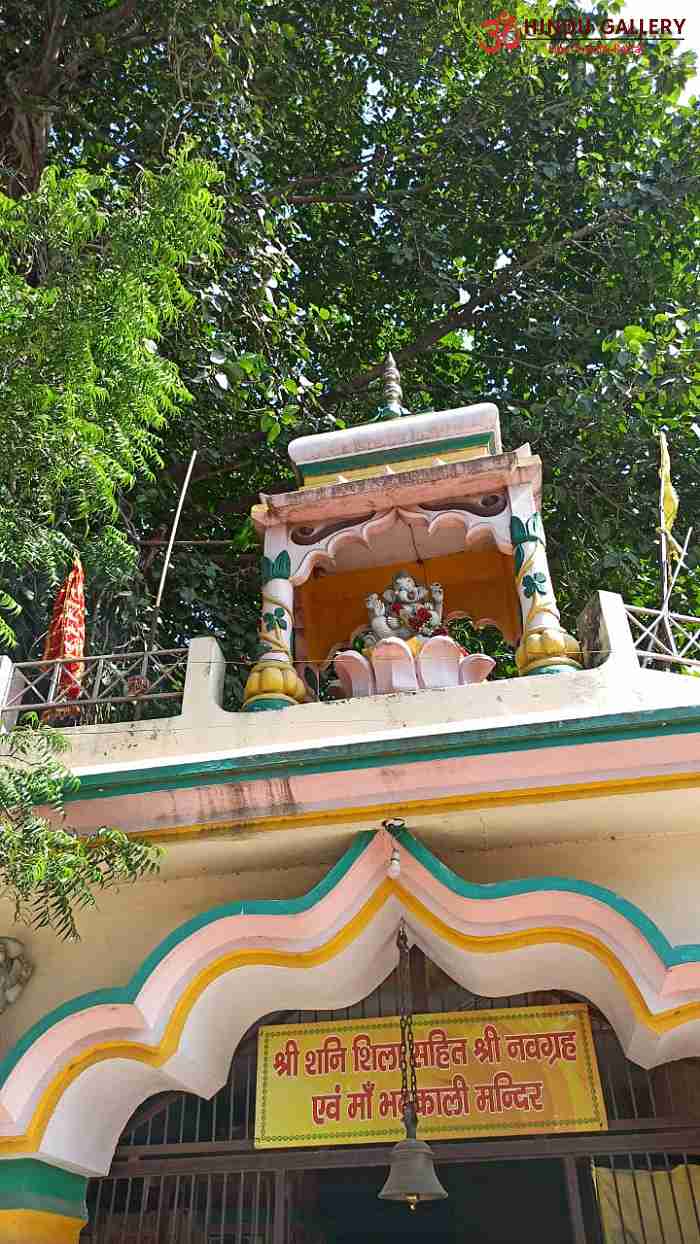
It may be noted that the said Nava Grahas are said to influence our fortunes. It is believed that during the origination of earth Sri Brahma had created human beings from this banyan tree.
As per legend, according to Vamana Purana, the mere sighting and touching of this banyan tree and worshipping the Deities shall alleviate our sins and liberate our souls.
Birla Mandir
Details regarding this temple could not be ascertained.
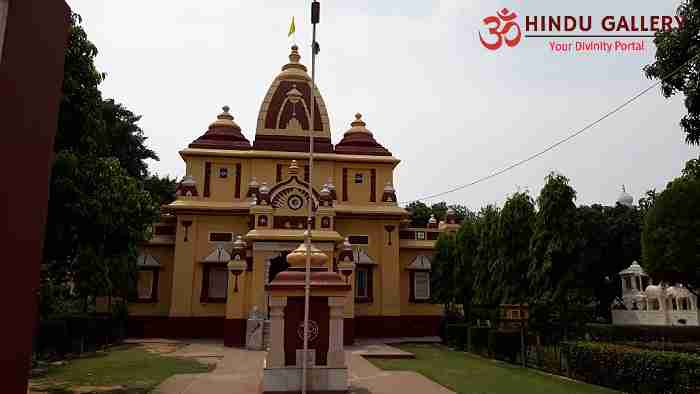
However, it is understood that this temple is dedicated to Bhagwan Sri Krishna.
Sri Devikoop Maa Bhadrakali Temple
Maa Bhadrakali temple is one of the 52 Shakti Peeth temples.
As per the Legend, Goddess Sati married Bhagwan Shiva against the will of Her father, King Daksha. One day Daksha performed a Yagna where he invited all the deities, but not his own daughter and son-in-law.
Sri Sati visited the ceremony unexpectedly, but with the permission of Lord Shiva. Being already infuriated by Her, Daksha insulted Her and Her husband. She couldn’t tolerate the insult. She threw herself into the sacred yagna fire.
Grief stricken, Bhagwan Shiva started pacing the universe with the dead body of Sri Sati in His hands. This act of Bhagwan Shiva made the other Deities extremely worried.
Hence, Bhagwan Vishnu released the Sudarshan Chakra that cut Sri Sati’s body into 52 parts. Those parts fell on earth at different locations. Sri Sati’s right ankle was believed to have fallen in Kurukshetra. This presence of the Goddess’s body part makes this place holy.
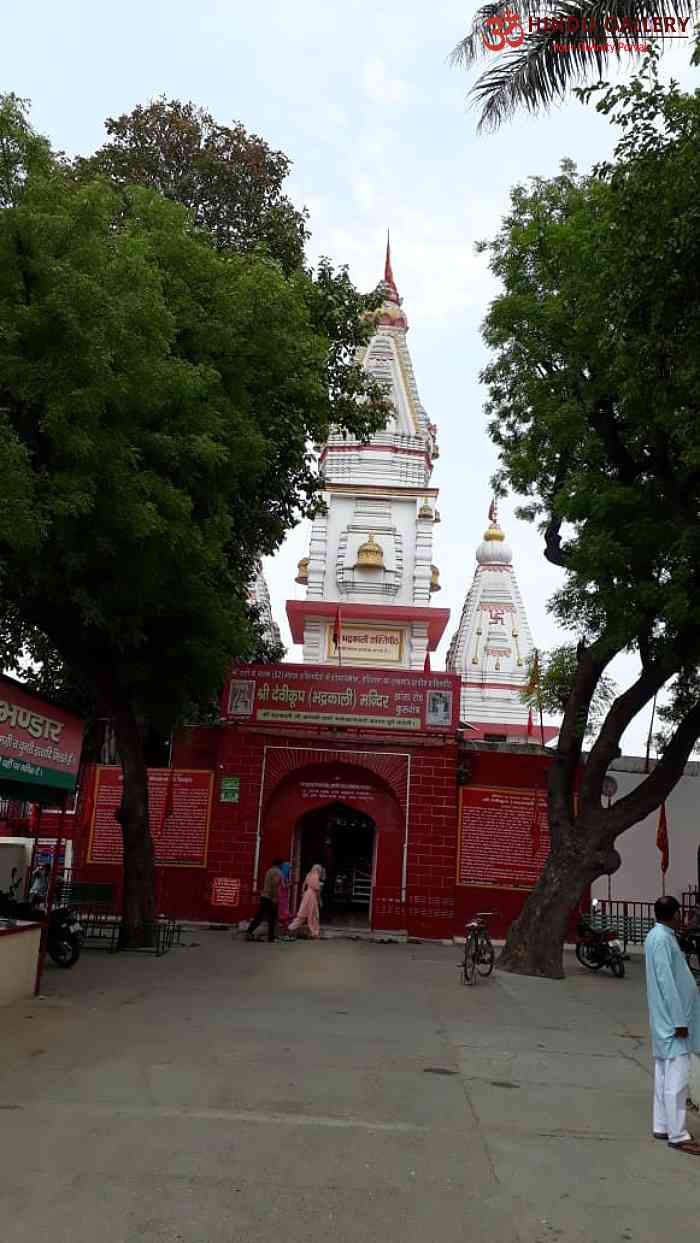
Just before the main sanctum, the vigraha of the right ankle is kept in the atrium.
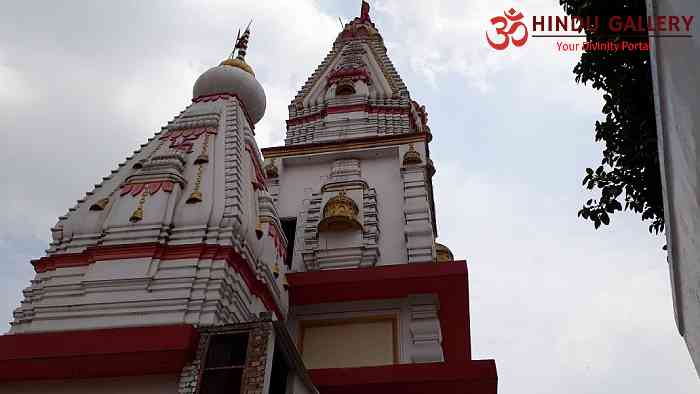
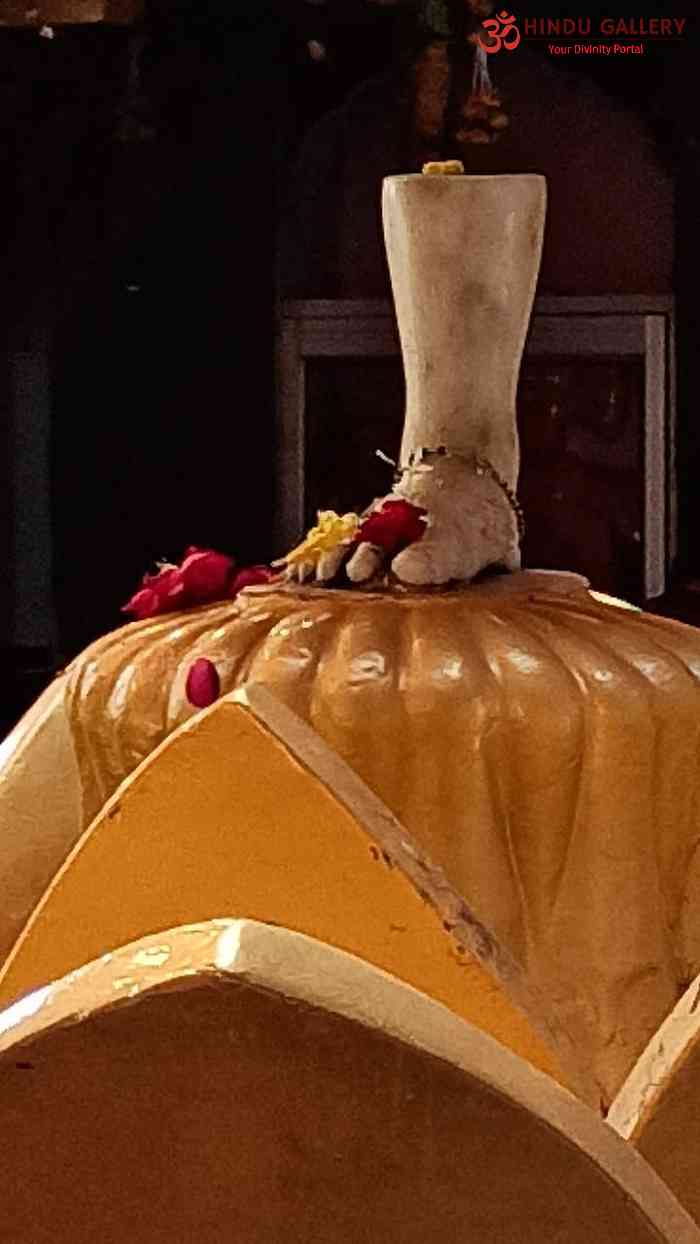
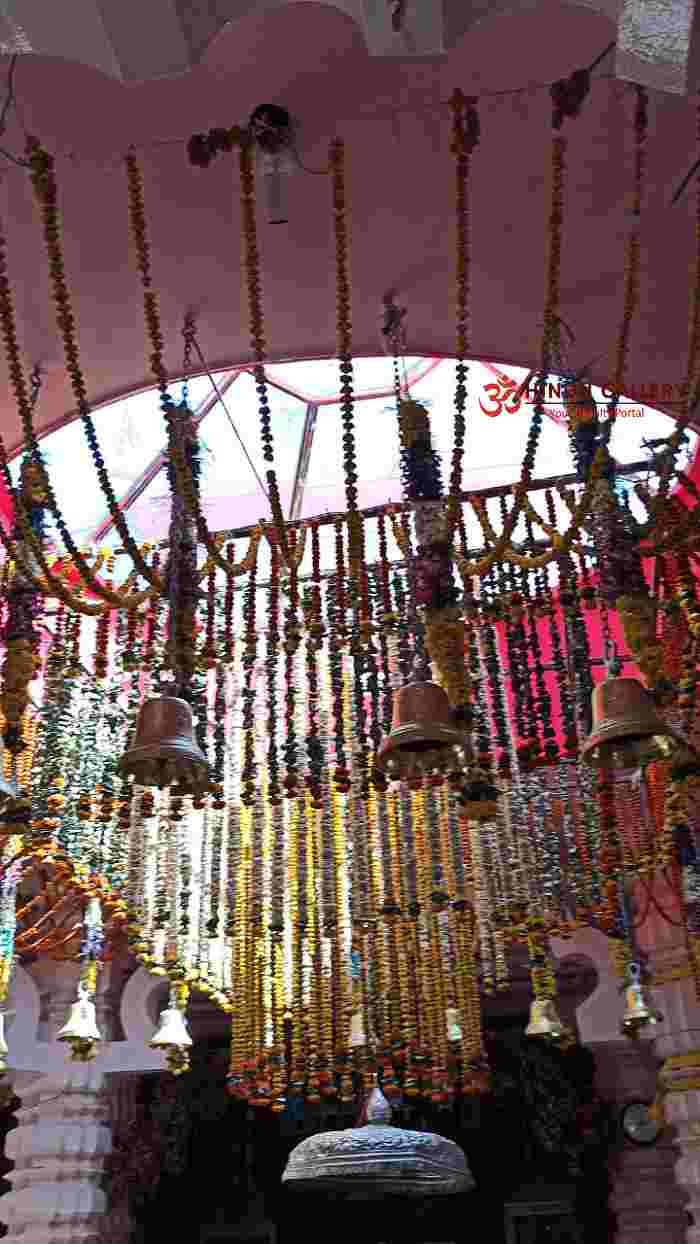
Sri Bhadra Kali Mata is in the main sanctum. After worshipping Her, we take a perambulation.
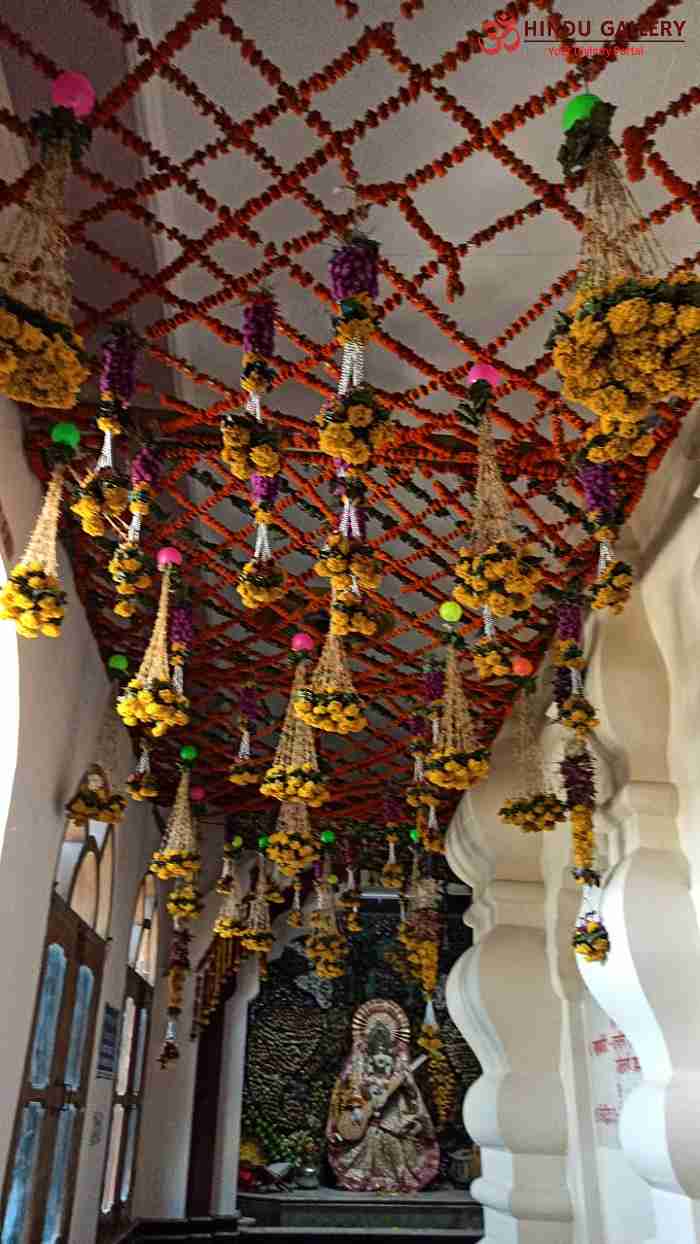
We can see the structure of open-mouthed lion which houses some Deities.
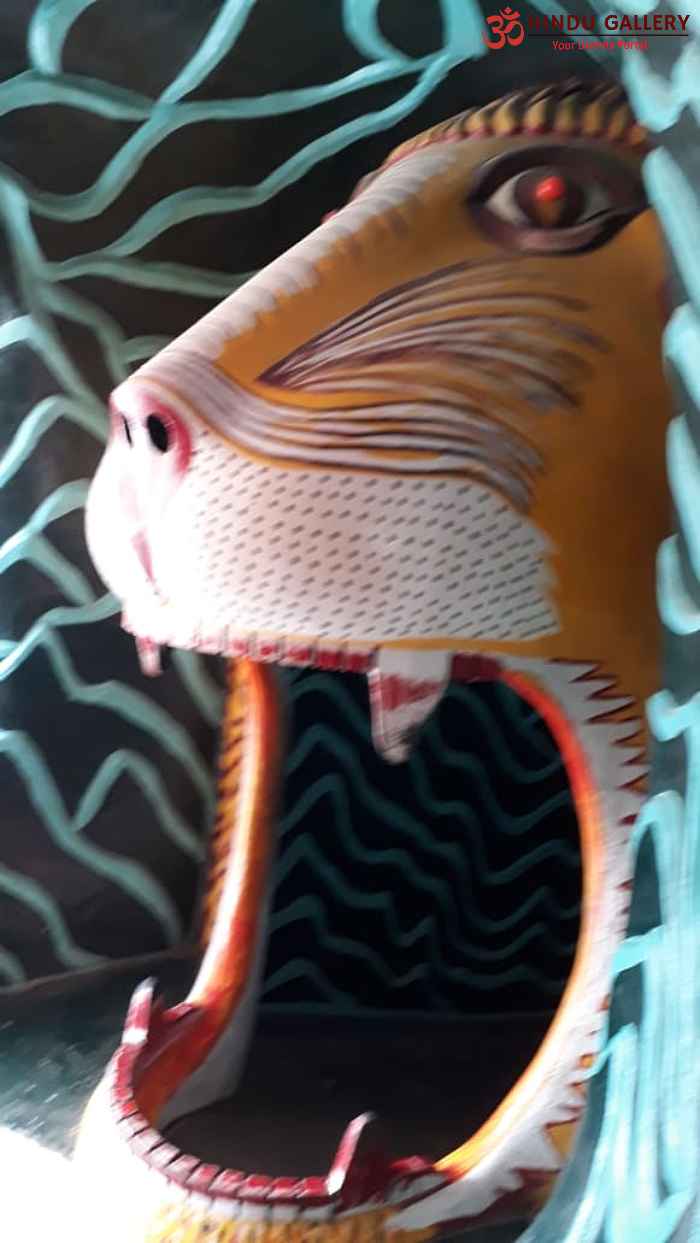
On doing the parikrama, we are blessed with the darshan of Sri Annapurna, Sri Shiv, Sri Saraswathi Devi, Sri Ram and Sri Sita, Sri Krishna and Sri Radha, Sri Vishwaroopa Kali and Sri Shiv family with Sri Parvathi, Sri Ganesh and Sri Muruga.
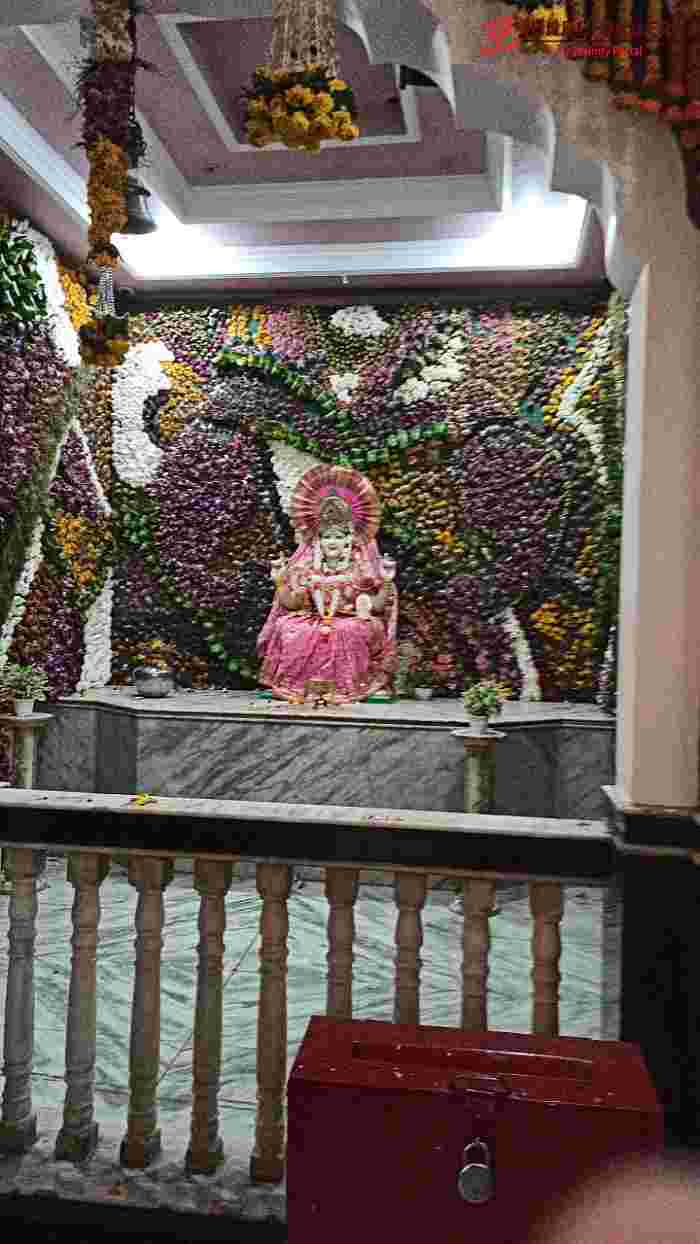
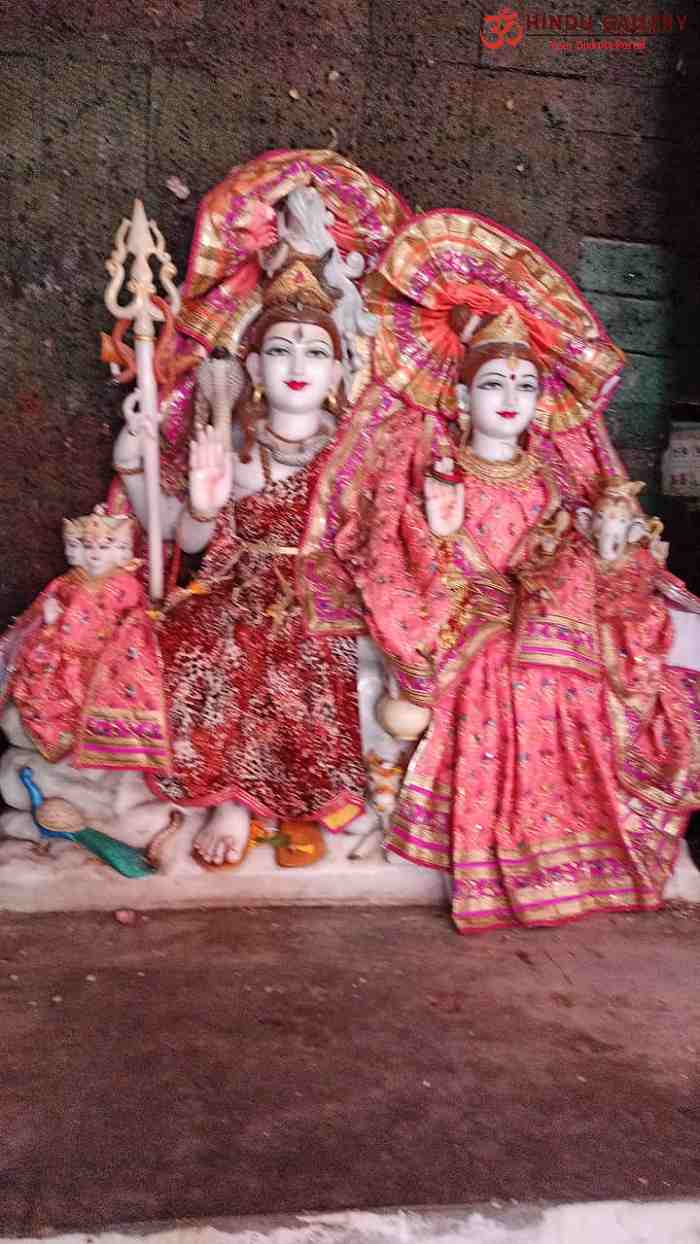
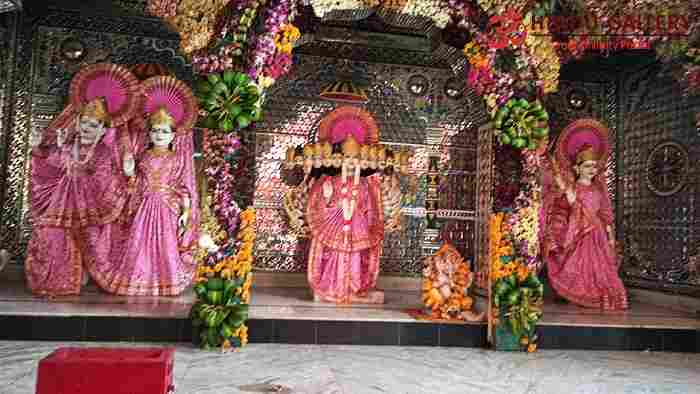
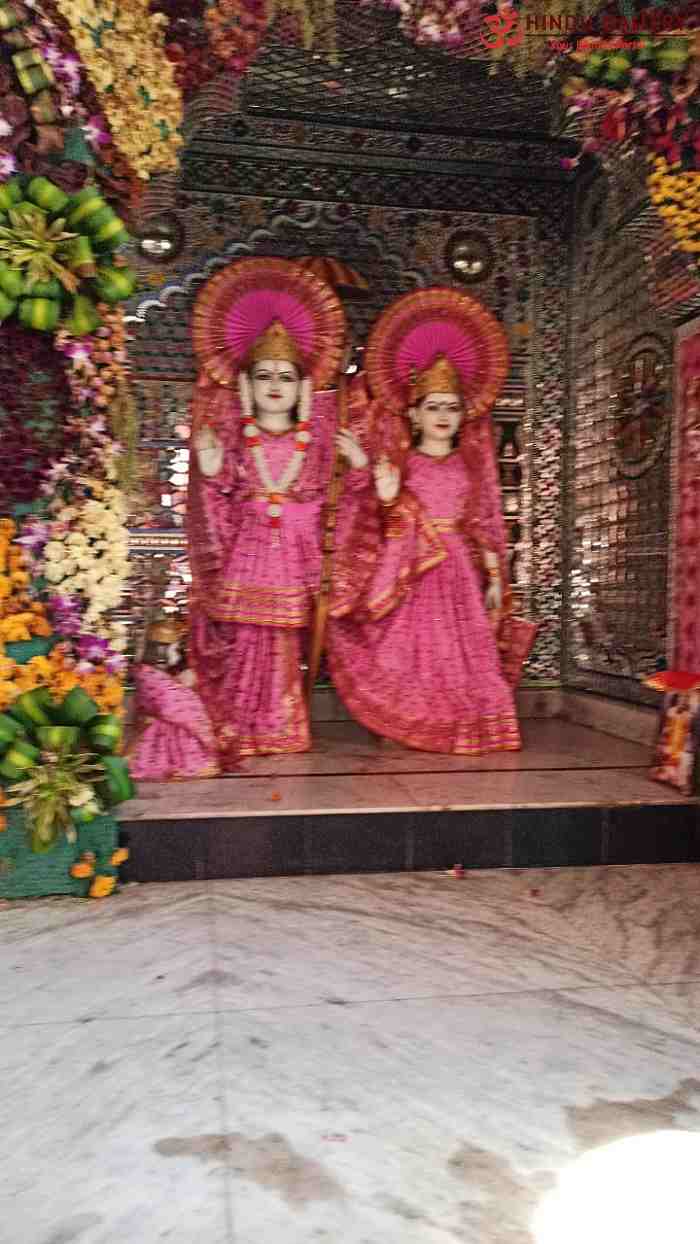
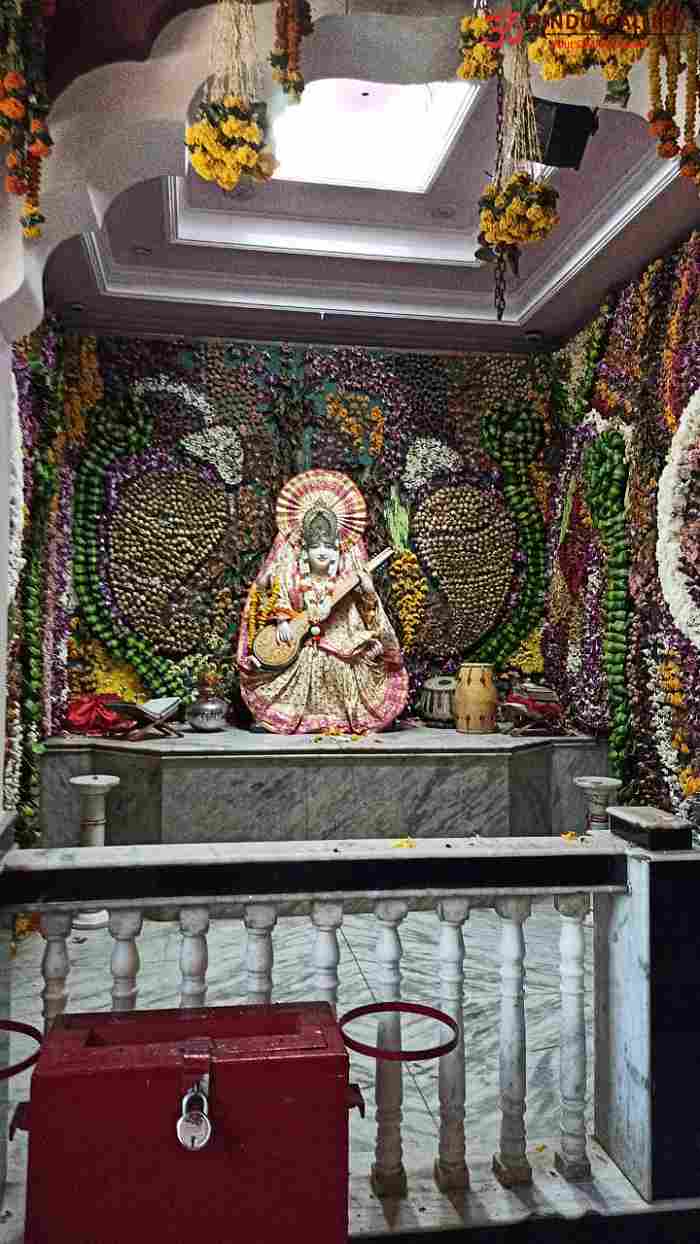
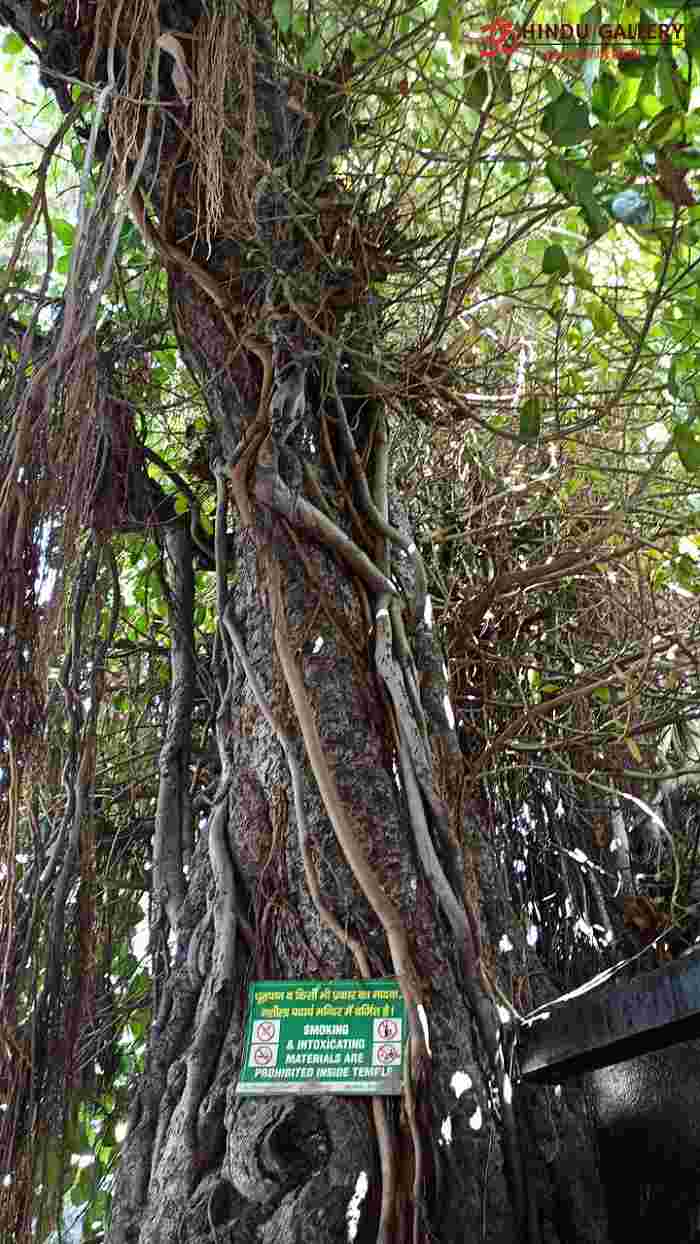
There is a flight of stairs, we can see the mandap depicting Chakra-Vyuh.
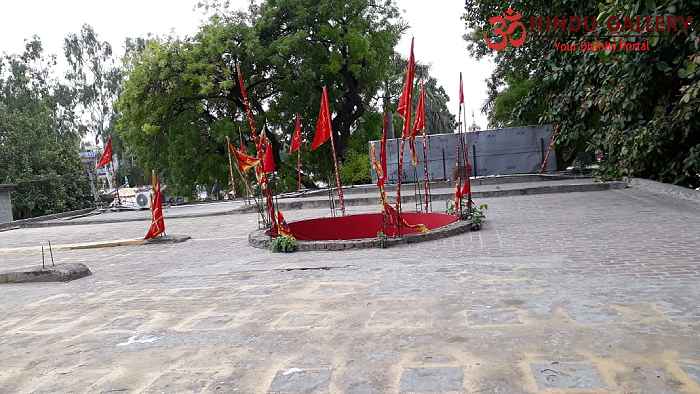
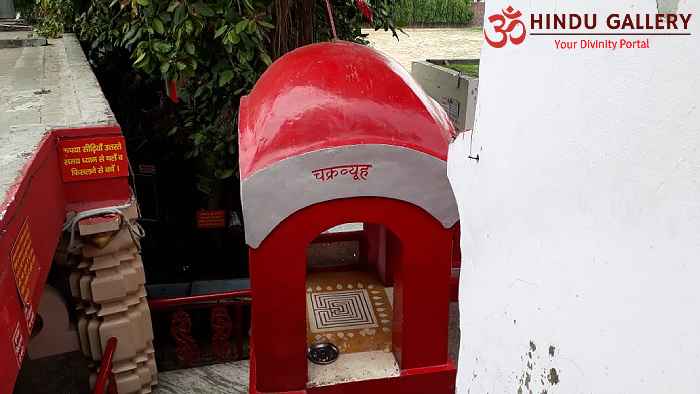
It is believed that both Sri Krishna and Sri Balarama had their first hair cut only at this temple.
It is believed that visiting the temple on Saturday and worshipping the Goddess fulfils the wishes of devotees.
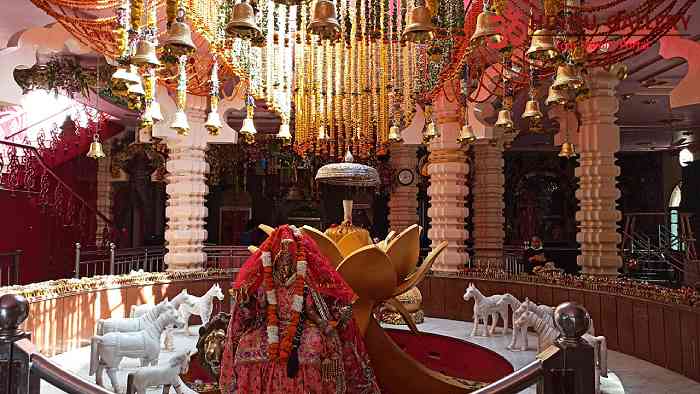
After the fulfilment of one’s wish, miniature horse idols are offered to the temple.
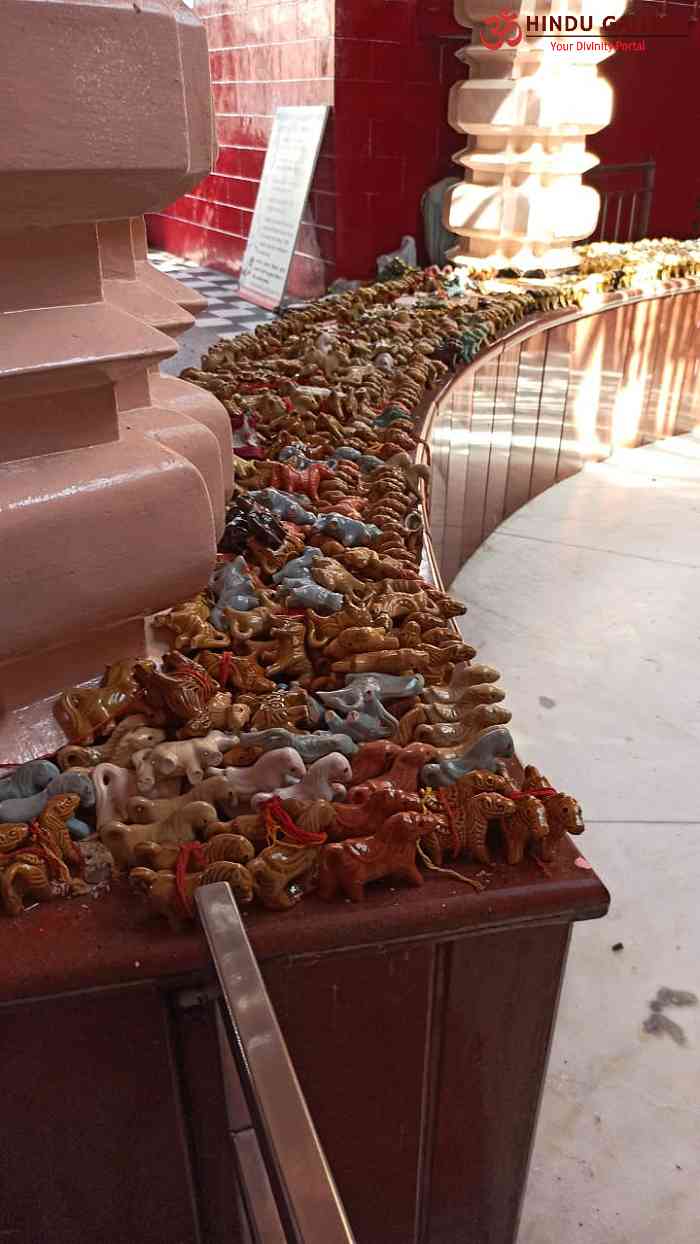
Visiting this temple and spending some time brings energy and positive vibes.
Sannihit Sarovar
This place houses small shrines dedicated to Bhagwan Sri Vishnu , Sri Dhruv Narayan, Sri Laxmi Narayan, Sri Santhoshi Mata, Sri Dhruv Bhagat, Sri Anjaneya and Goddess Sri Durga Devi near a lake, a huge reservoir of water in Thanesar.
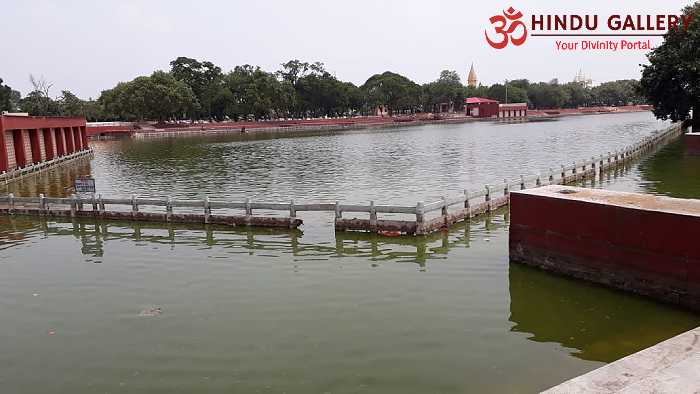
Aa per the legend, the lake is believed to be the meeting point of sacred rivers and taking holy dip here on Amavasya (new moon day) and Grahan (eclipse days) bestows the blessings which are equal to performing Ashwamedh yagna.
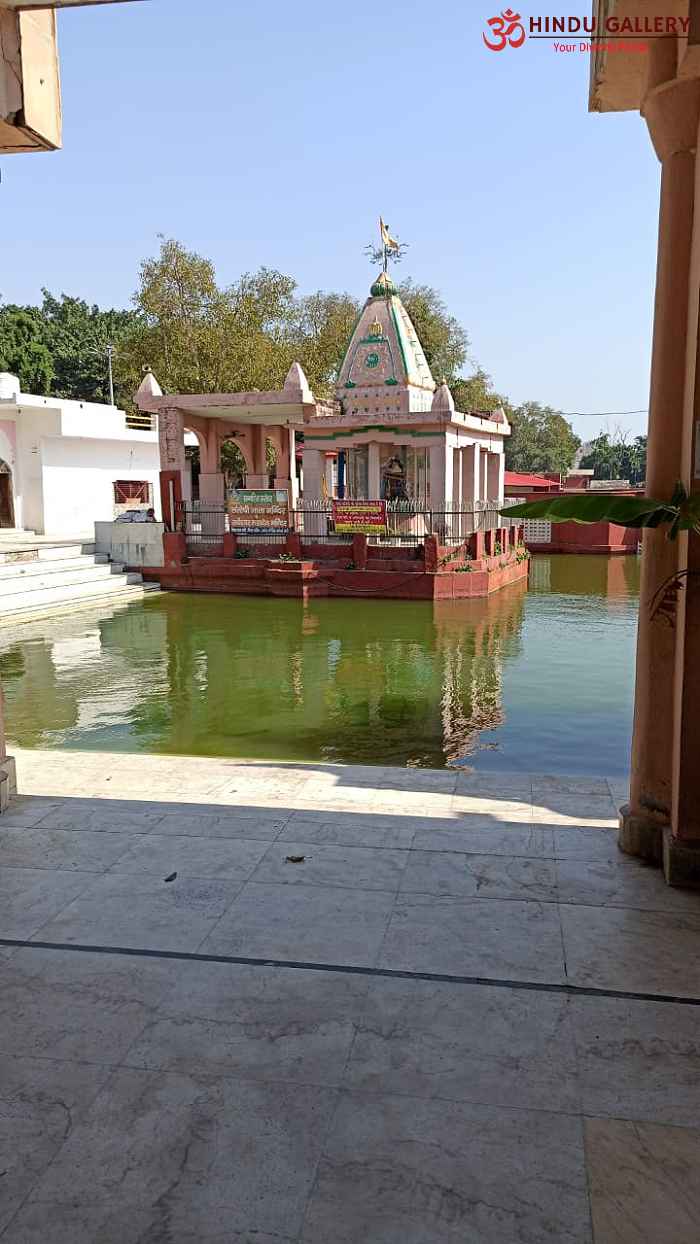
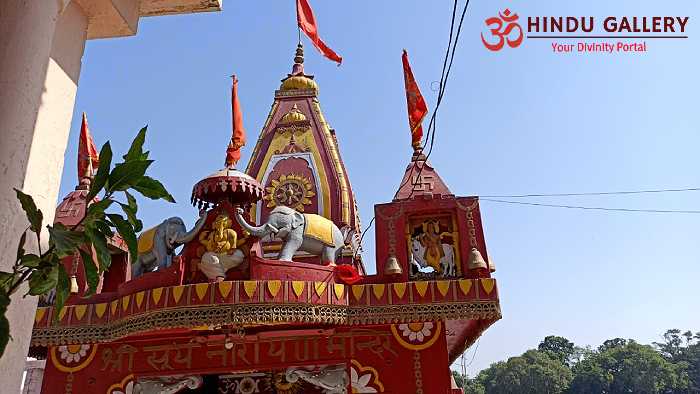
It is also believed that taking the holy dip in this Sarovar shall endow peace to the wandering and unhappy souls. Prayers and memorial service such as Tharpan and Pind dhan are also performed here.
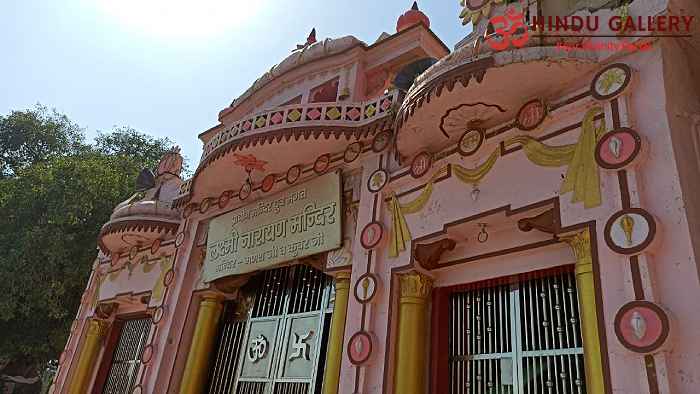
It is believed that the Genealogy registers of Hindus are here. It is believed that there are possibilities for the pilgrims to ascertain about their ancestors if they had visited here.
Shri Lakshmi Narayan Mandir
As per the legend, Pandavas had installed the holy statue of Sri Lakshmi Narayan at this place and sought His blessings prior to the Maha Bharatha war.
It is believed that the temple construction was done in 12th Century and restoration was done in 16th Century by an architect from Rajasthan.
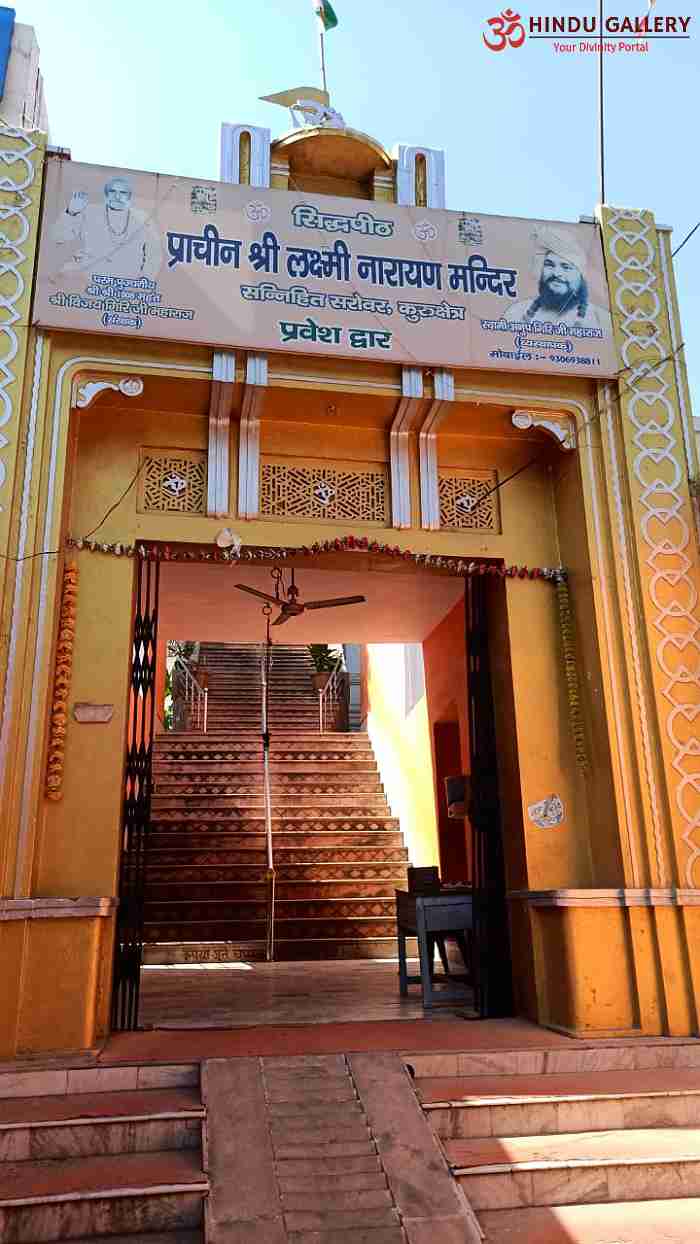
The height of the temple is 124 feet and is visible from many places in the city. The Kalash at the top of the tower is gold plated.
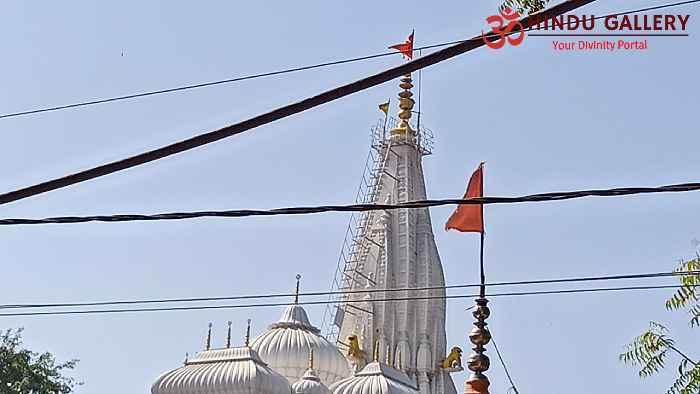
The temple faces east and it is believed to be the abode of Vasthu compliance. The first ray of the rising sun touches the feet of Sri Lakshmi Narayan.
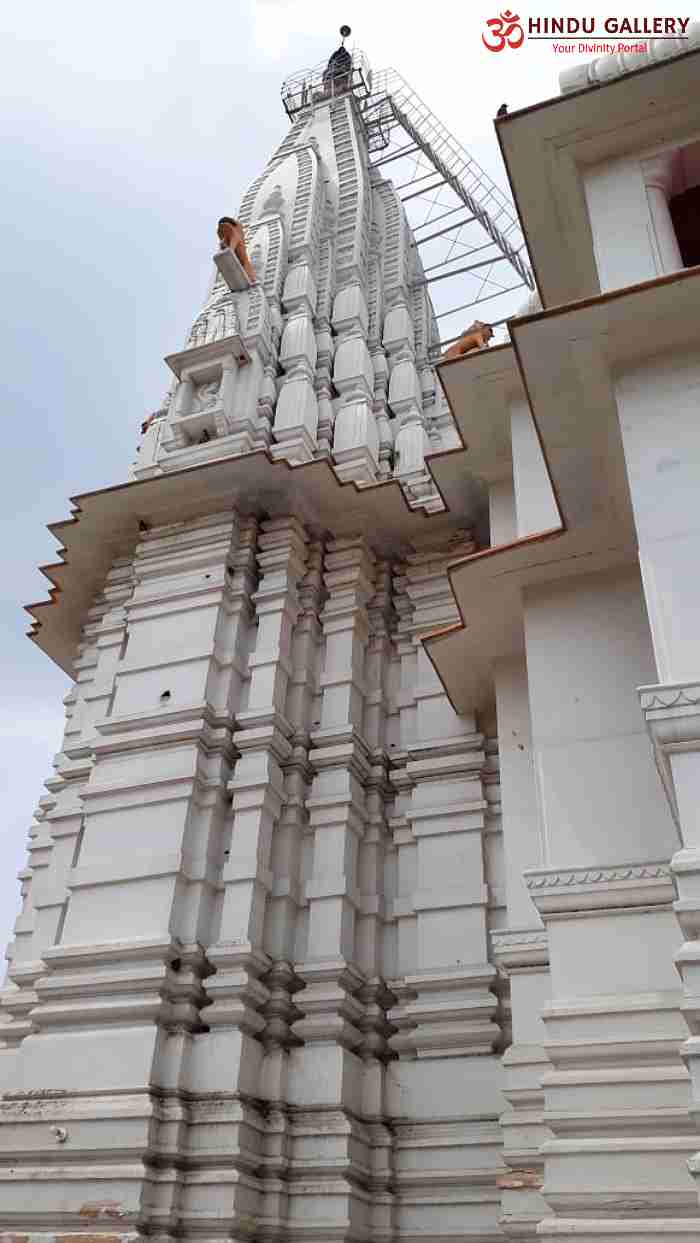
At the entrance of the temple, a serene Shiva vigraha is installed. We have to take the straight stairs to reach the sanctum of Sri Lakshmi Narayan.
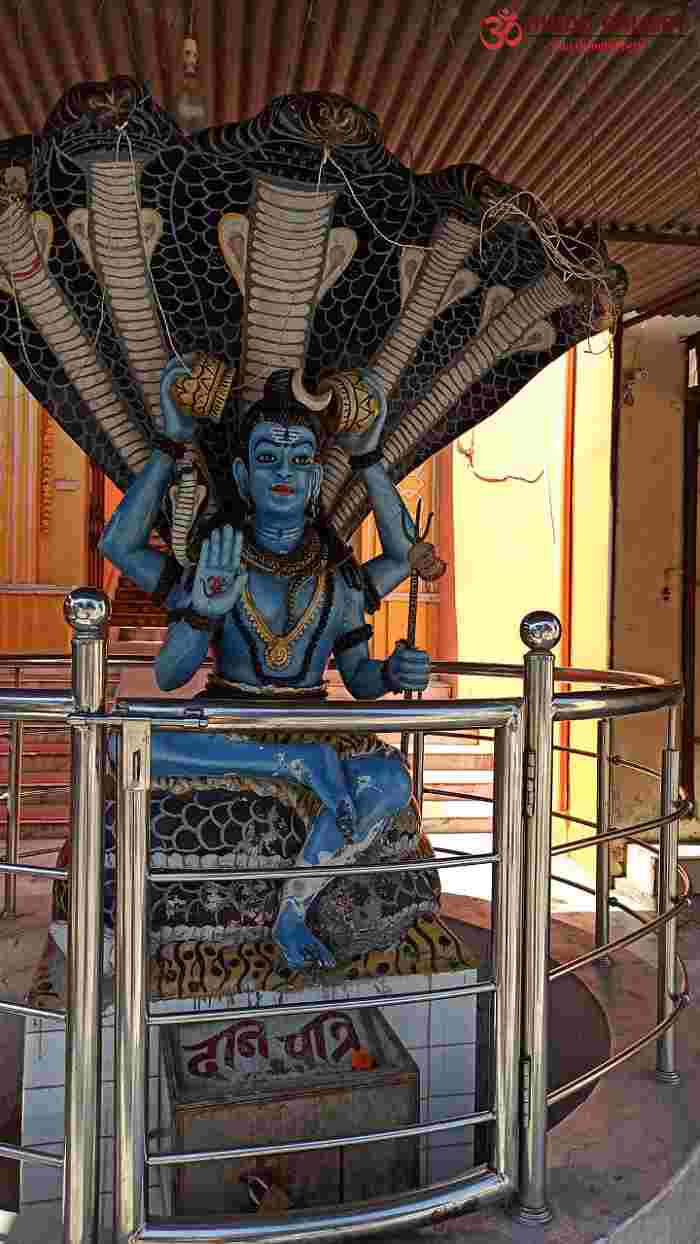
There are also sanctums for Sri Ganesha, Sri Garuda and Sri Kuber, the God of wealth.
It is believed that offering of yellow coloured prasad and clothes to the Lord shall bring luck in the business. People throng the temple on Tuesdays and Thursdays with yellow-colored offerings.
Brahma Sarovar
Sarveshwar Mahadev Temple is situated on the banks of vast Brahma Sarovar. It is believed that when Sri Brahma had created the earth, He had performed a huge yagna and installed the first Shiv Ling in this temple and worshipped.
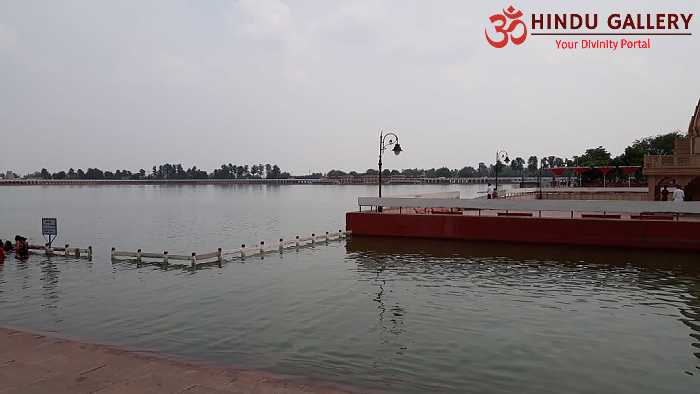
The Shiv Murthi is called as Sri Sarveshwar Mahadev. It can be reached through the concrete arch bridge from the bank of the lake. It has three entrances with doors having intricate designs.
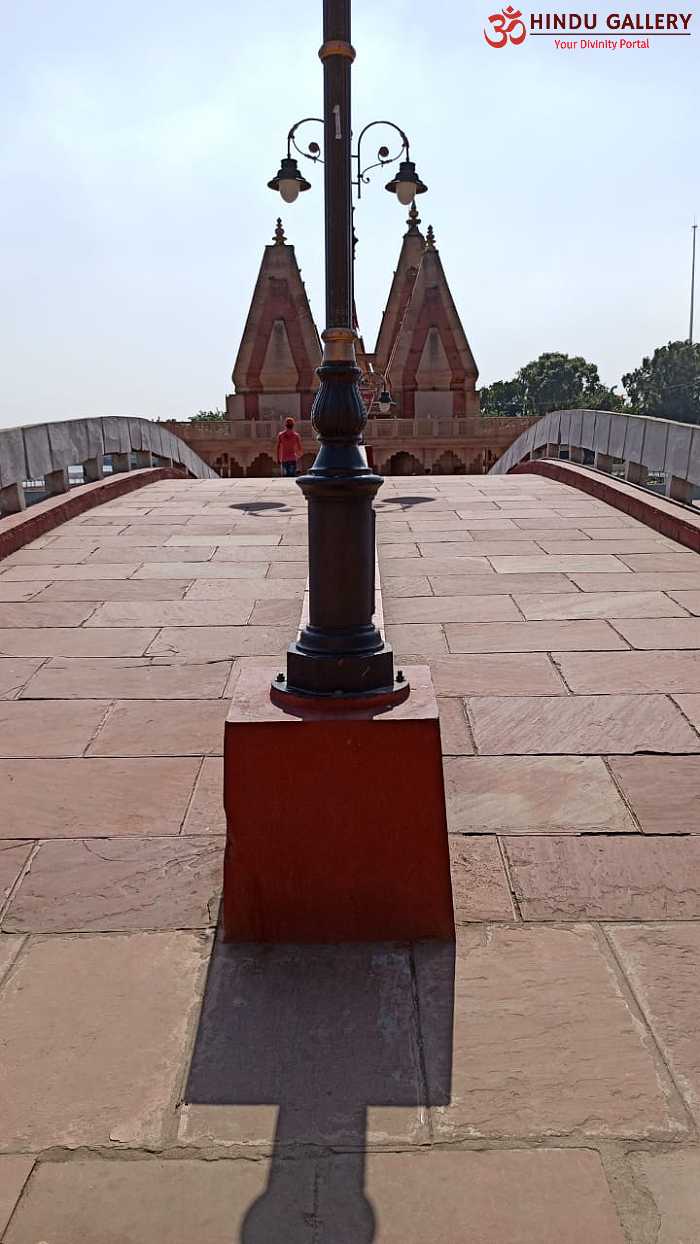
On crossing the bridge we come to the main sanctum. We have the darshan of Sri Sarwashwar Mahadev. The sanctum is surrounded by water on all sides. When we take perambulation, we can sense the flow of air in all the directions through the main sanctum mandap.
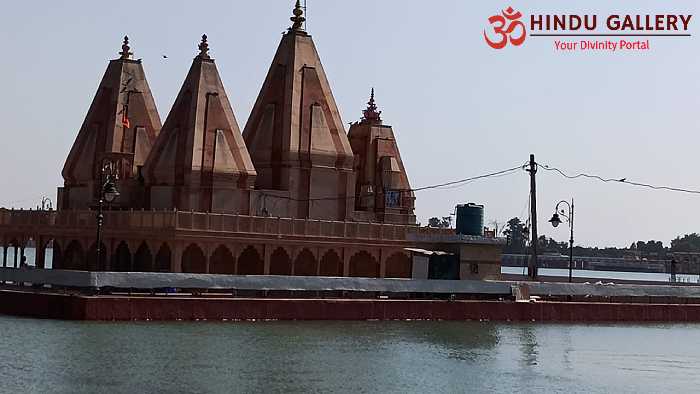
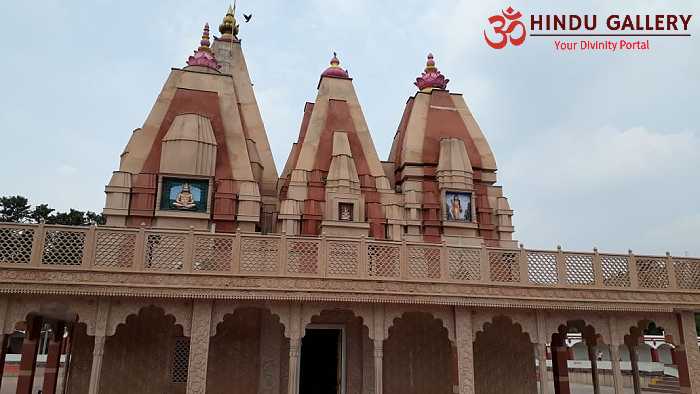
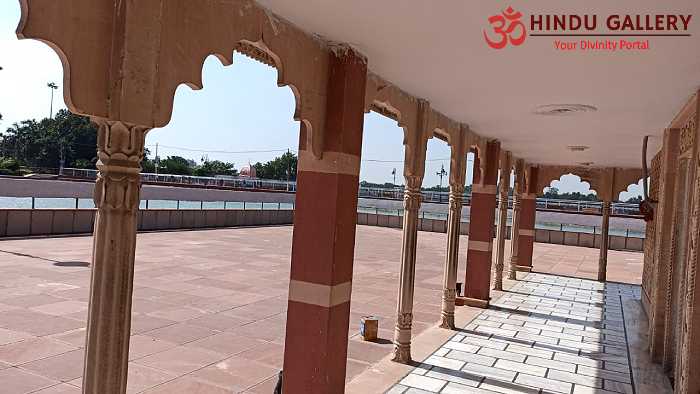
During the invasions by the other cult, the temple was ruined. It is believed that only in 18th Century the temple was renovated. The temple is constructed with sandstone and marble.
Apart from Shiv Murthi, there are also idols of Bhagwan Hanuman and Sri Garuda, the vahan (vehicle) of Bhagwan Krishna.
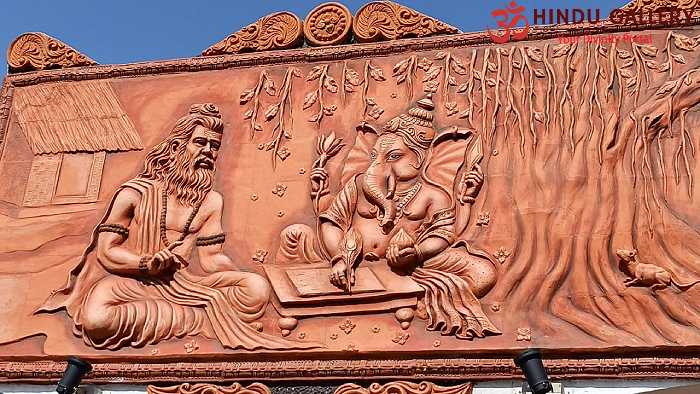
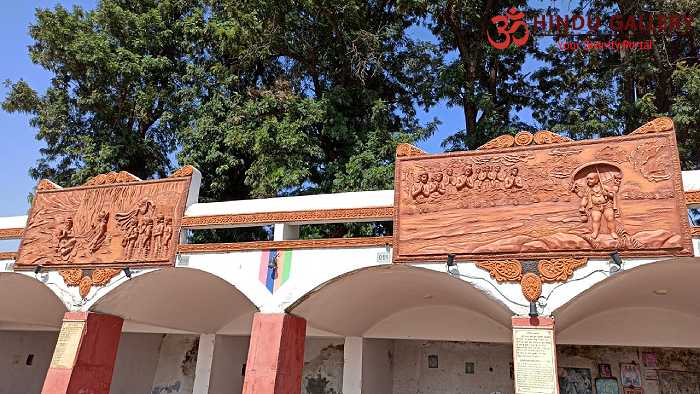
It is believed that during the Maha Bharatha war, the temple used to get destroyed in day time and re-built in night time. There is also a belief that Duryodhana had hid under the waters of the lake on the last day of the war.
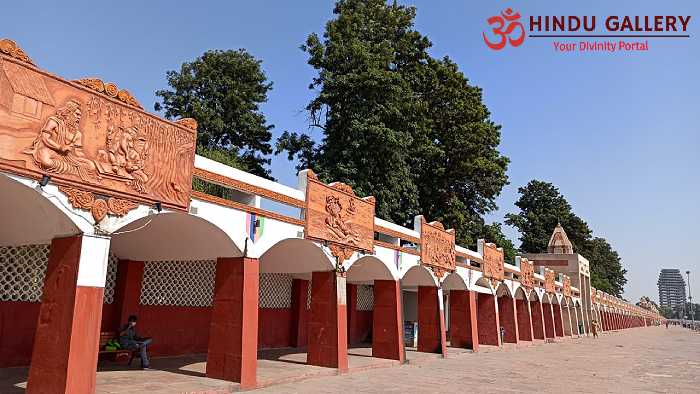
As per legend, taking a holy dip in the lake gives the blessings equivalent to performing a Ashwamedh Yagna. Taking a dip during solar eclipse is believed to alleviate all sins.
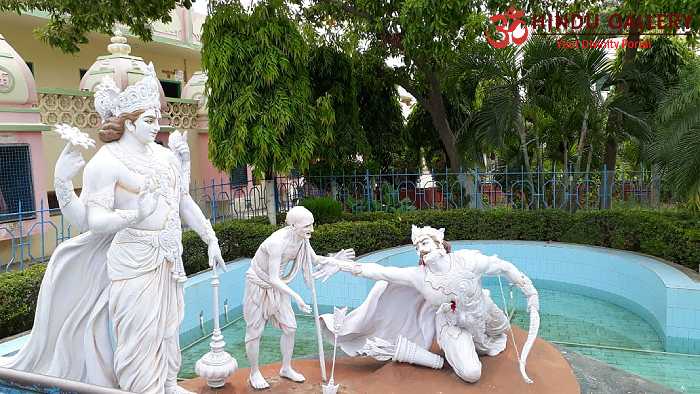
During the last week of November, Gita Jayanthi celebrations are held and the lamp floating festival is observed in December.
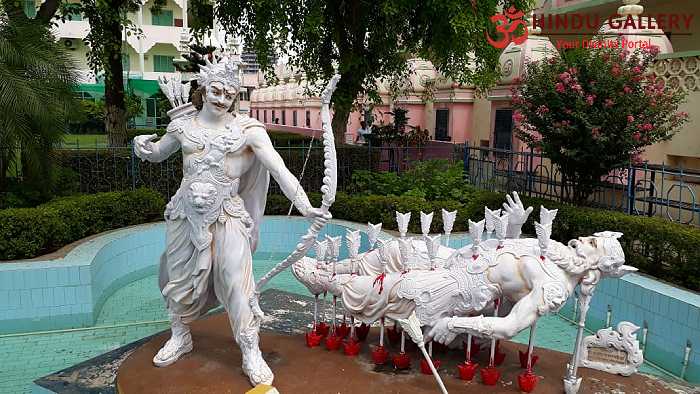
The temple is best viewed from Krishna Ghat and many people visit here for the grand evening Aarti and the glorious sunset. The temple is serene and tranquil. A simple walk around the temple listening to the vedic chants calms the mind.
There are various red color depictions of Dasha Avathar of Sri Maha Vishnu, incidents of Maha Bharatha etc., on the mandapams built near the banks of the sarovar.
Pandavas Haveli
The temple is called as Kaurav Pandav Mandir. The term ‘Haveli’ denotes a lodging place. The entrance of the temple looks grand with paintings of Deities and several multiple floral patterns.
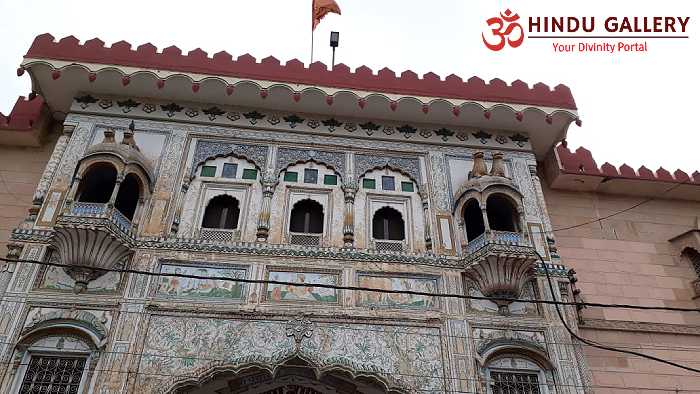
Inside the premises, on the ground floor, there are statues of various Deities and the main characters of Maha Bharata. There are also paintings depicting the incidents in Maha Bharata.
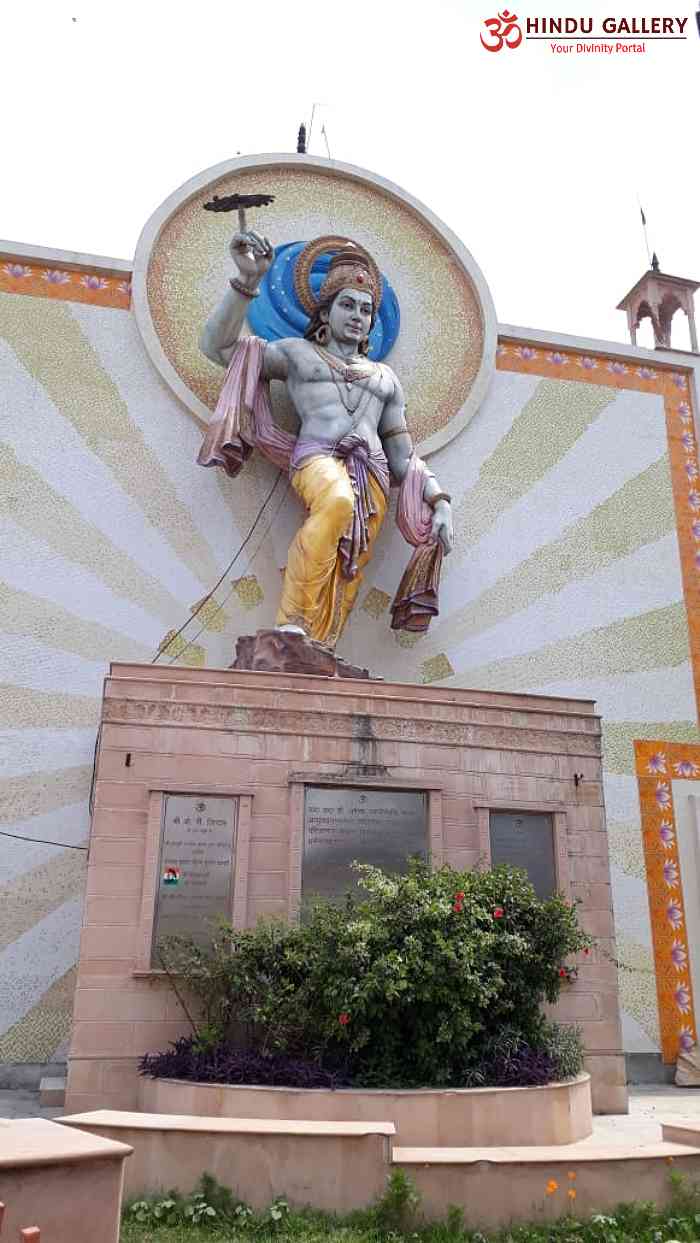
A bell named ‘Pracheen Gaj Ghanta’ meaning ‘ancient elephant bell’ is displayed in a glass enclosure. The upper floor is not accessible to the visitors.
Sri Krishna Museum
There is a dedicated museum depicting the life history of Sri Krishna and the incidents of Maha Bharatha. This is a huge museum and it takes atleast two hours to go around it.
The rocks, stones and the relics found in the excavations of Sri Krishna’s drowned Dwaraka city are on display. There are vyuh type structures through which we have to negotiate while seeing the pictures on the wall.
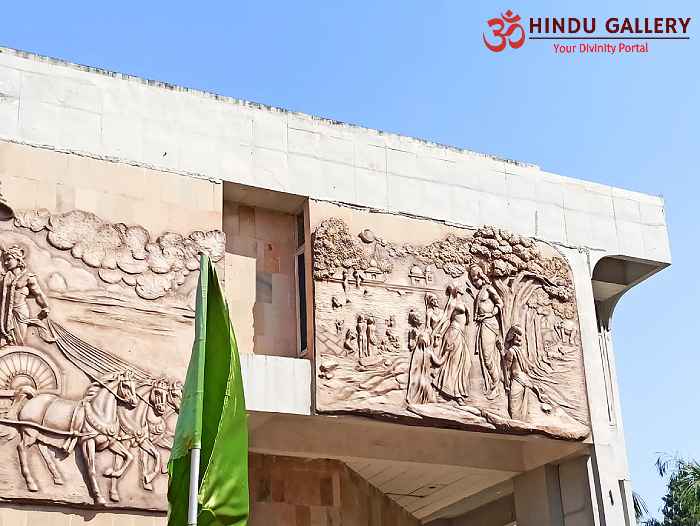
There are depictions of Bhishma on the bed of arrows, Draupathi’s woes in the palace court and other Maha Bharatha events. There is a classic 3D type gallery which show cases the nuances of Maha Bharatha.
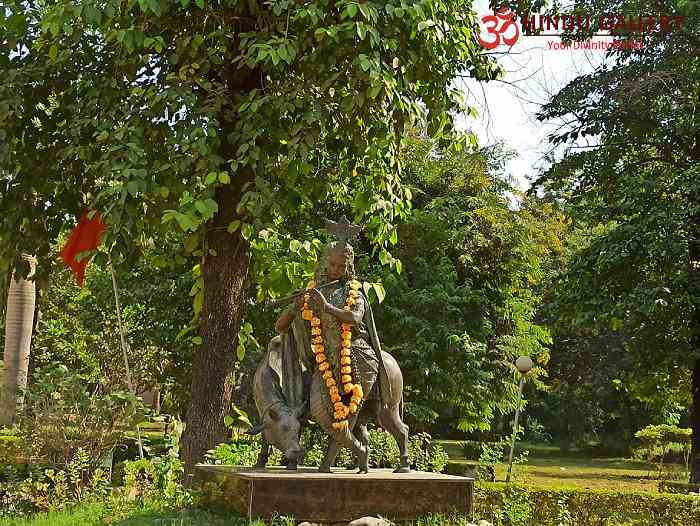
How to reach
Kurukshetra is well connected by both railways and roads. The Haryana State Transport Corporation has dedicated pilgrimage buses in the mornings that make the round of temples for a nominal fare. Apart from this, one can hire an auto for a fixed fare to go around the temples.


